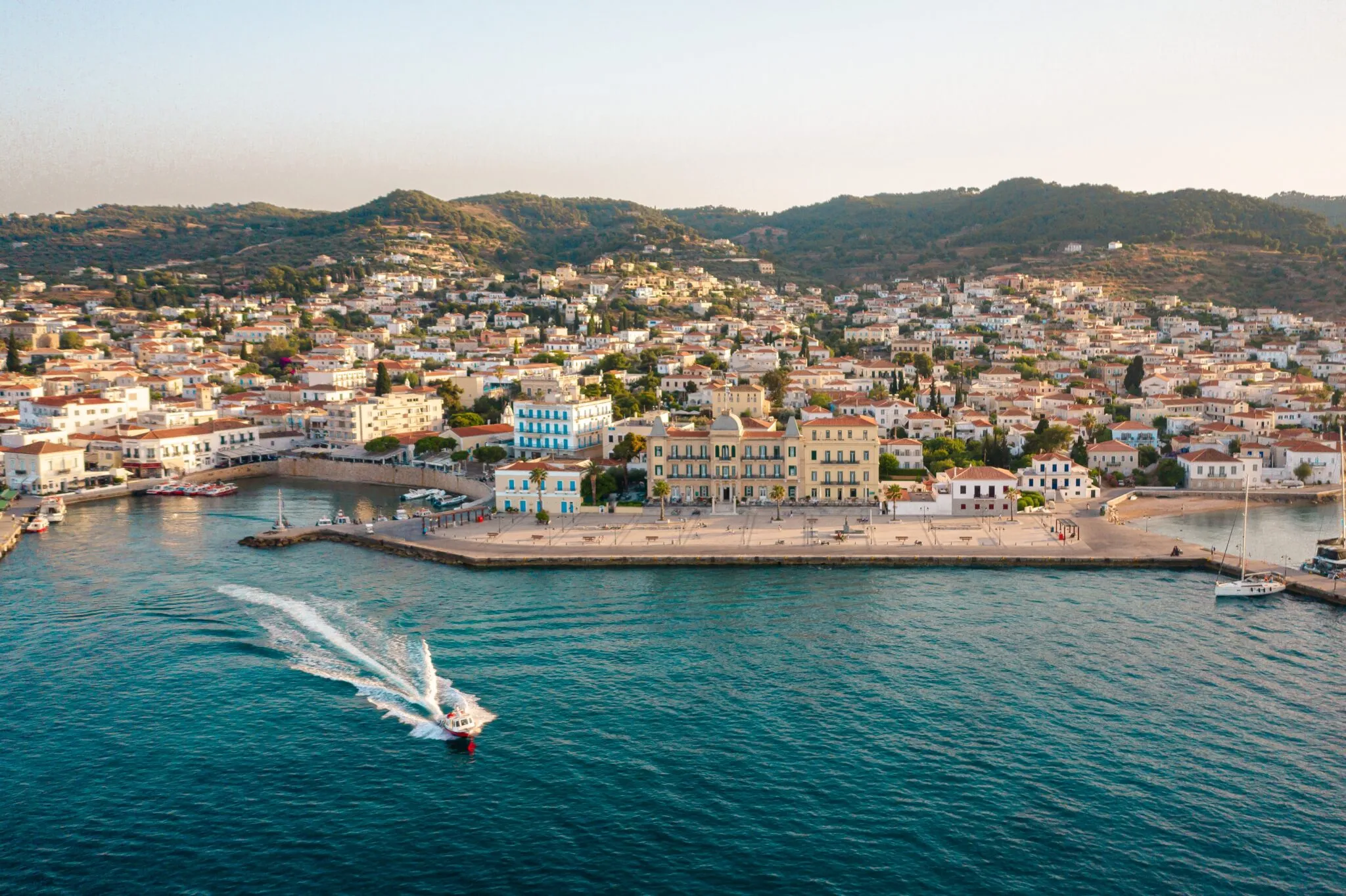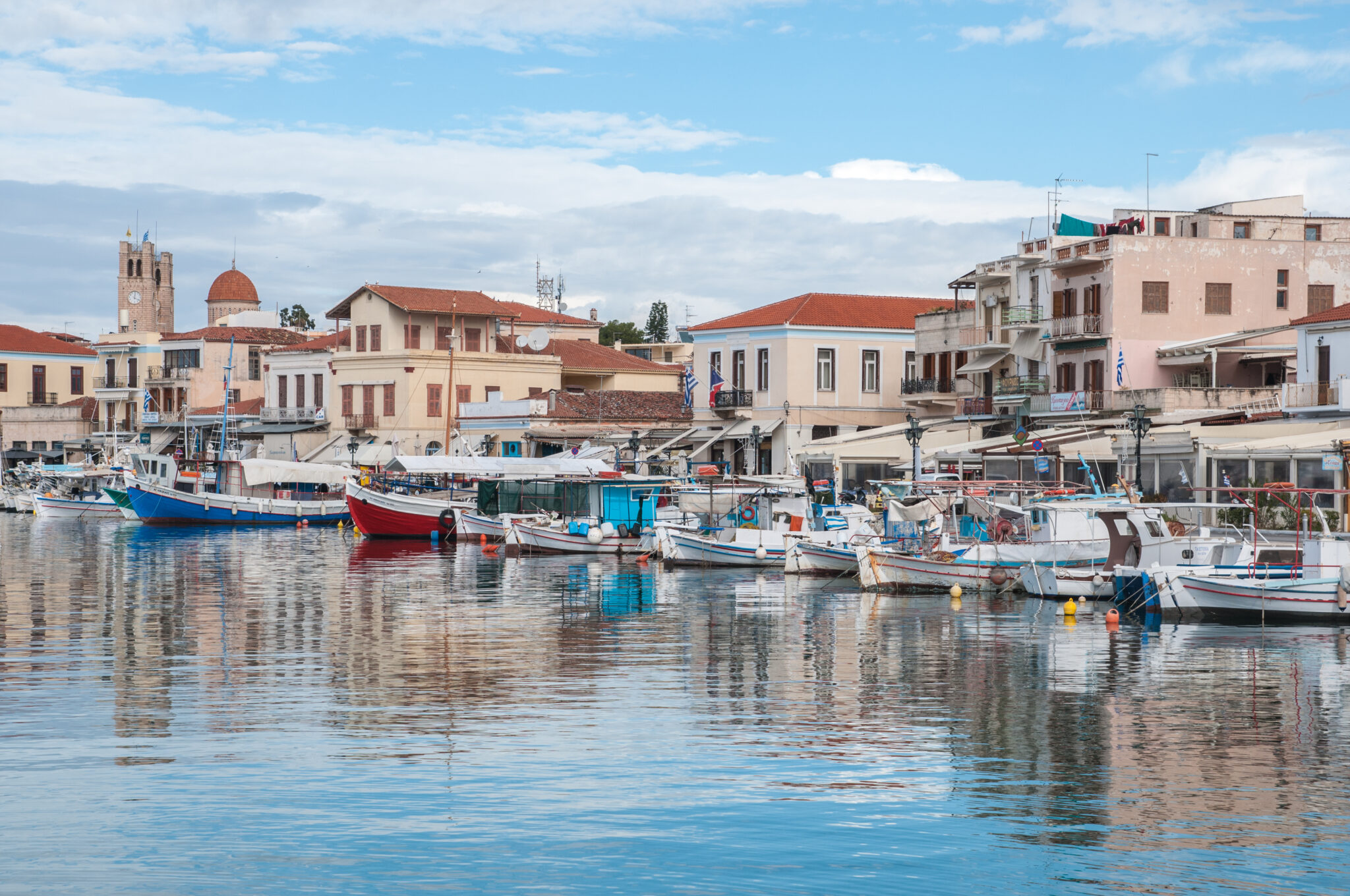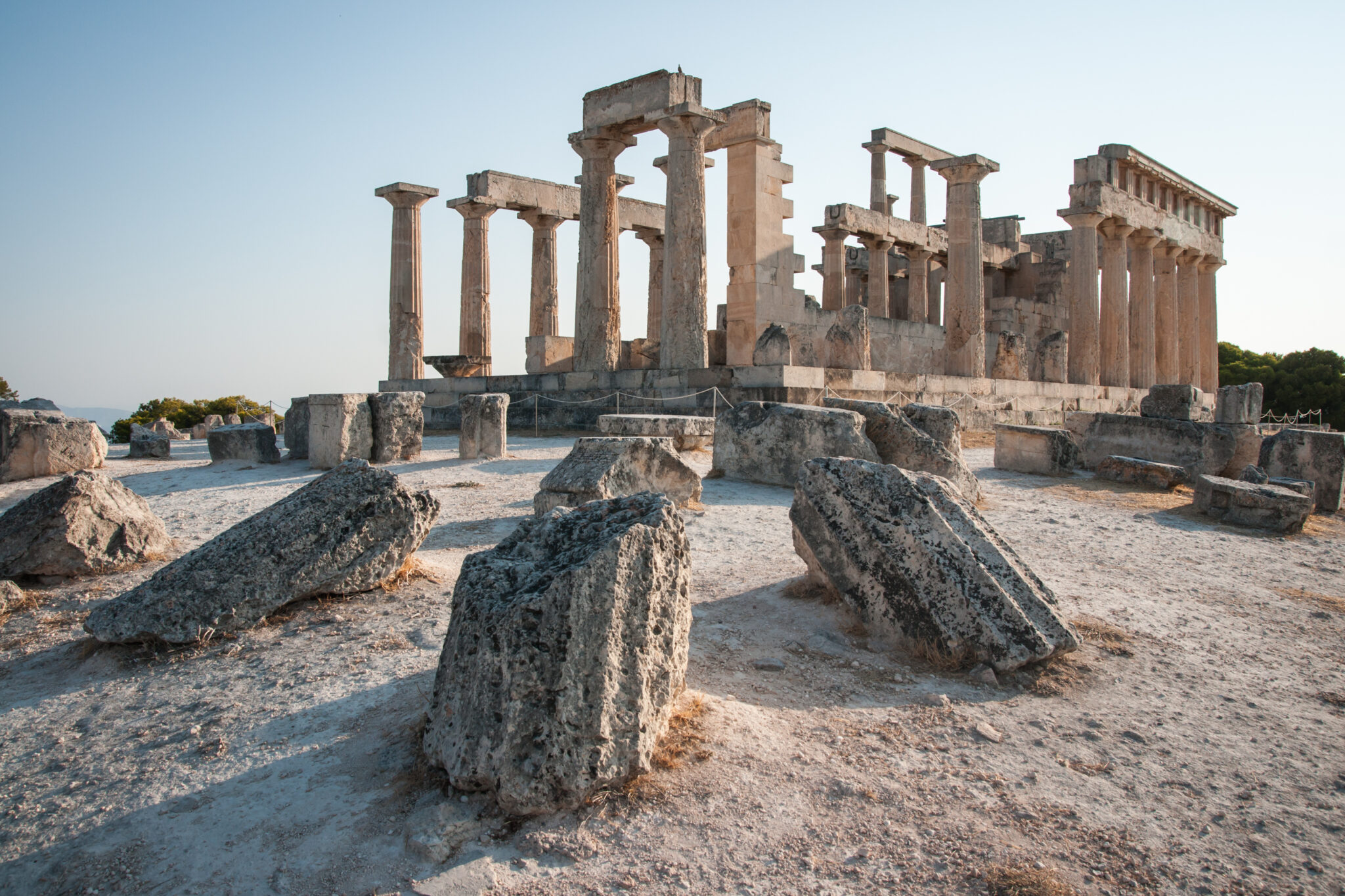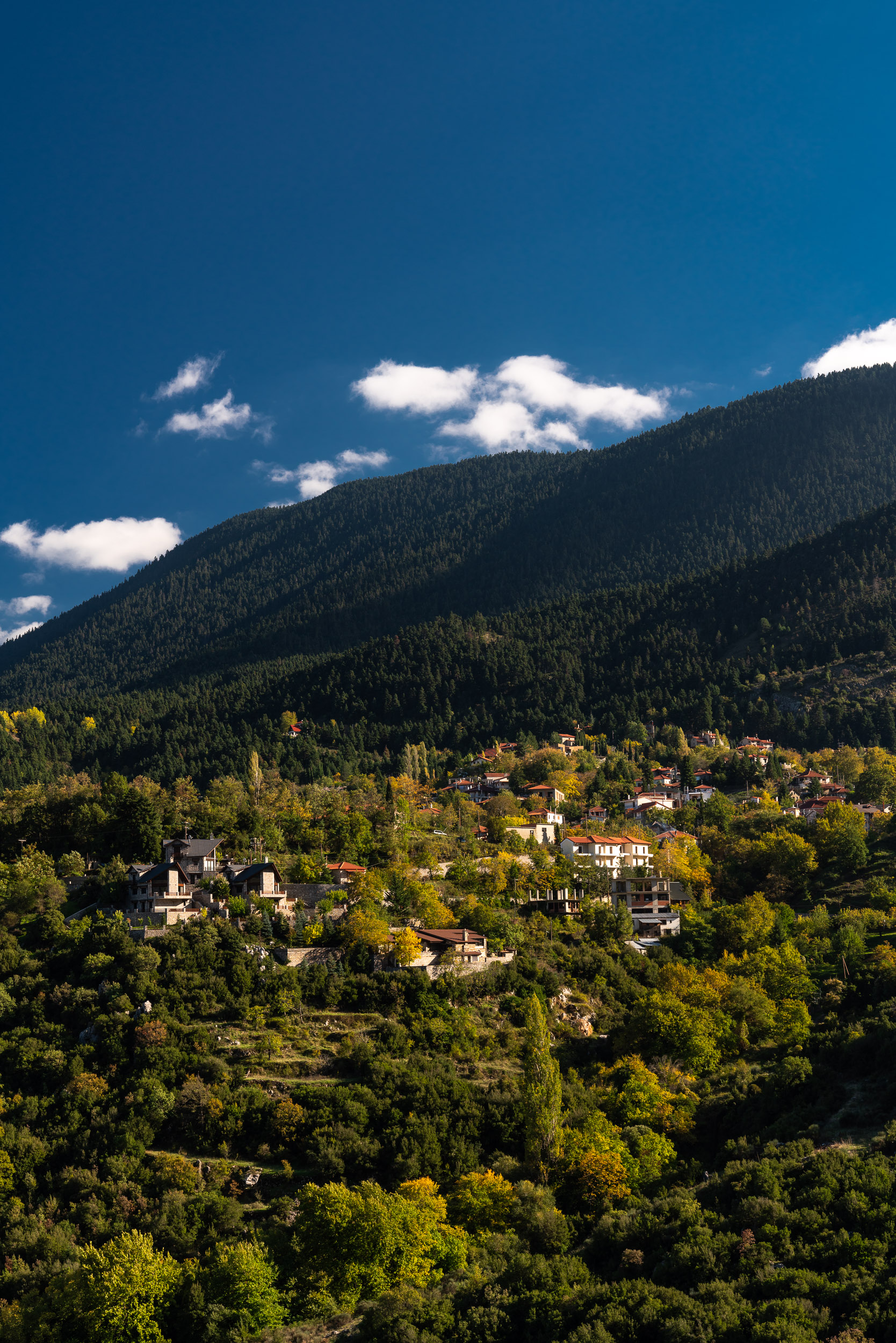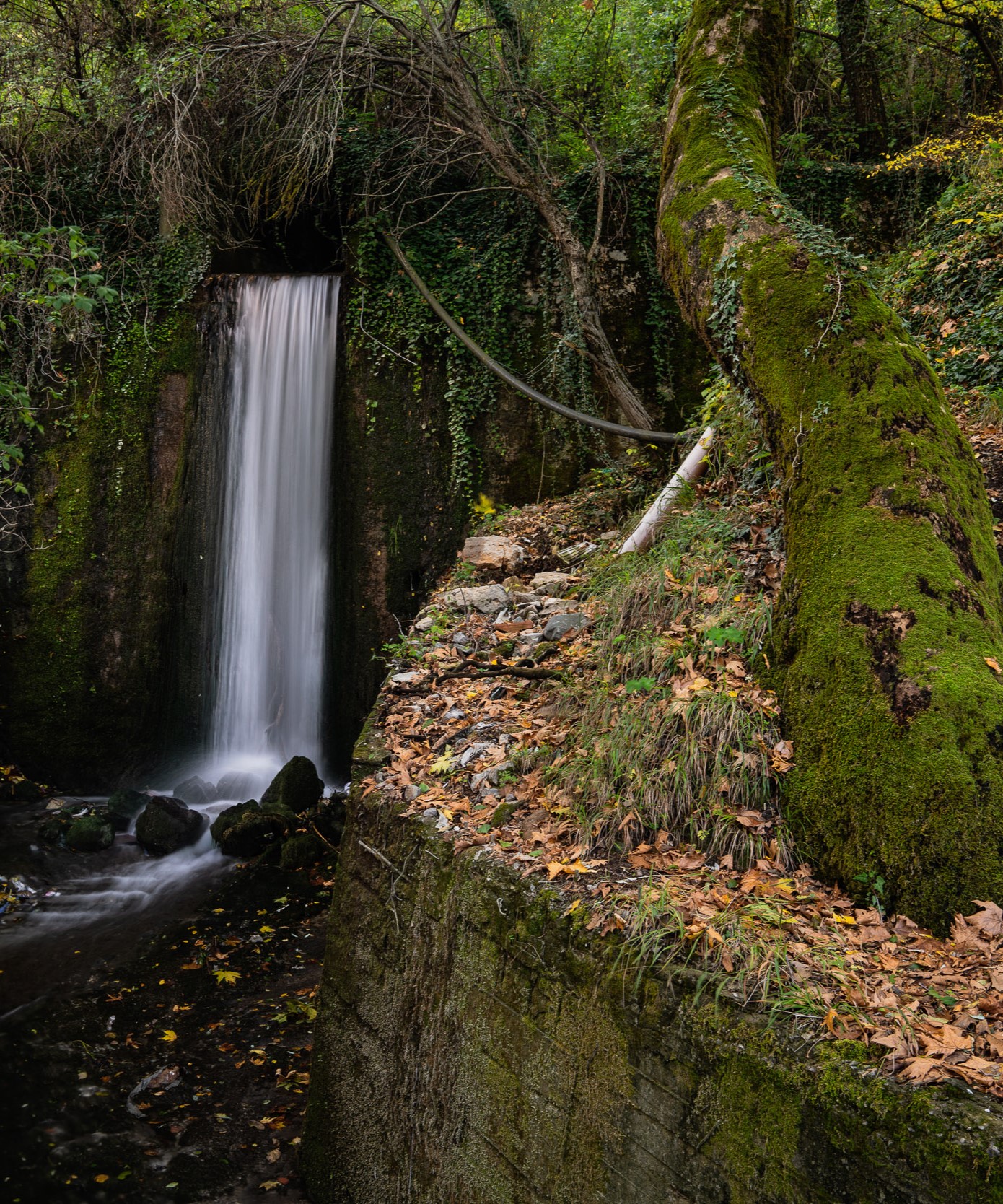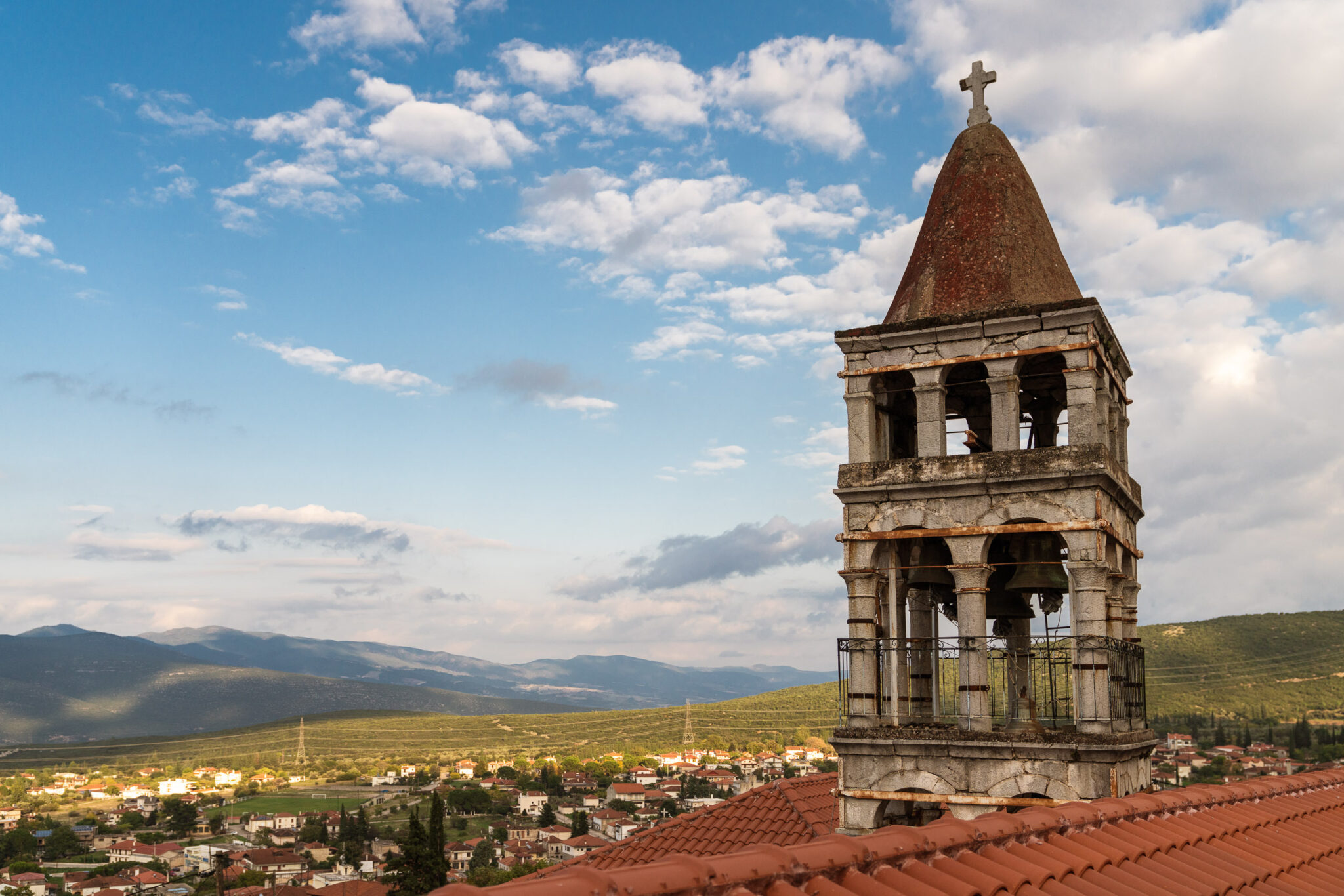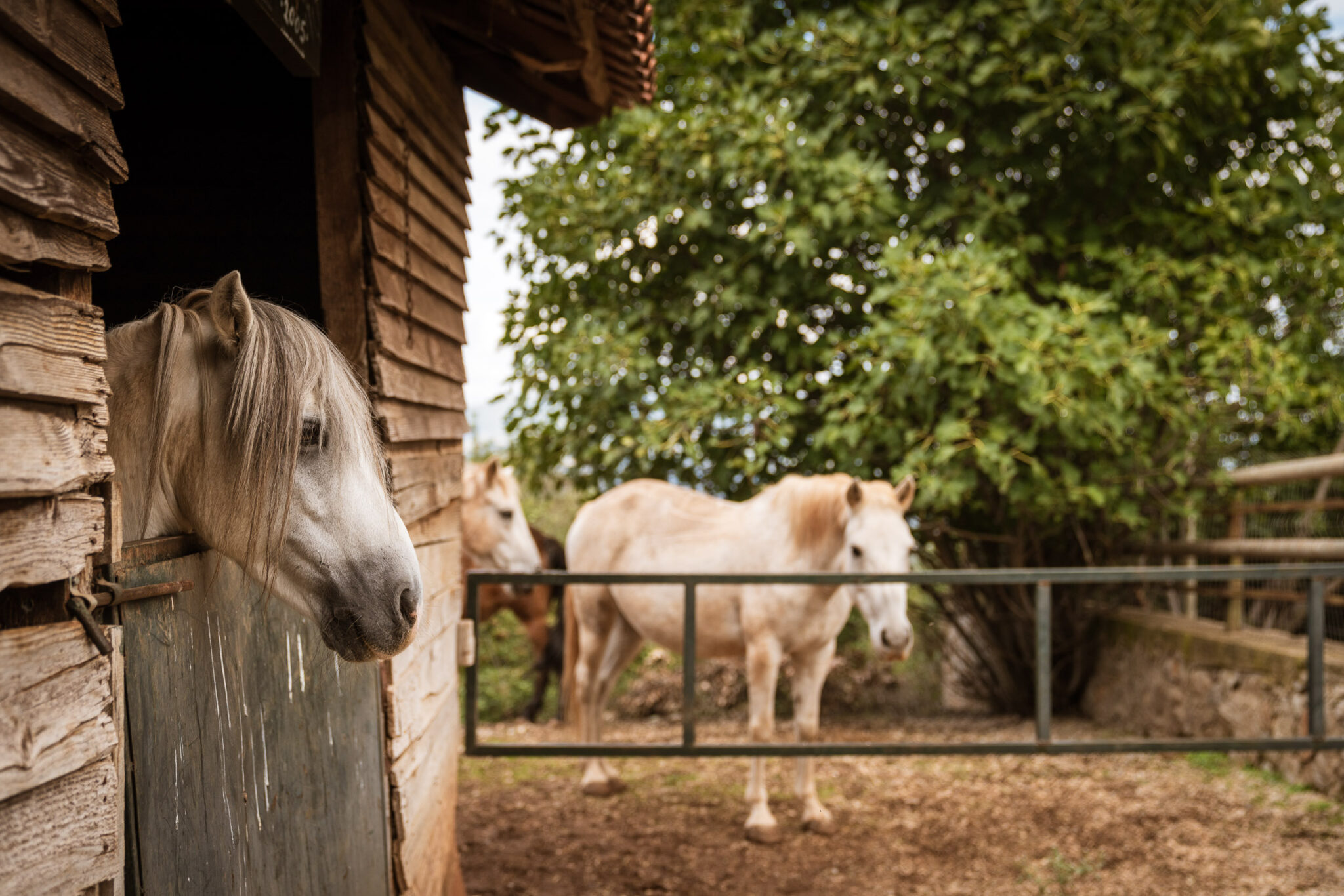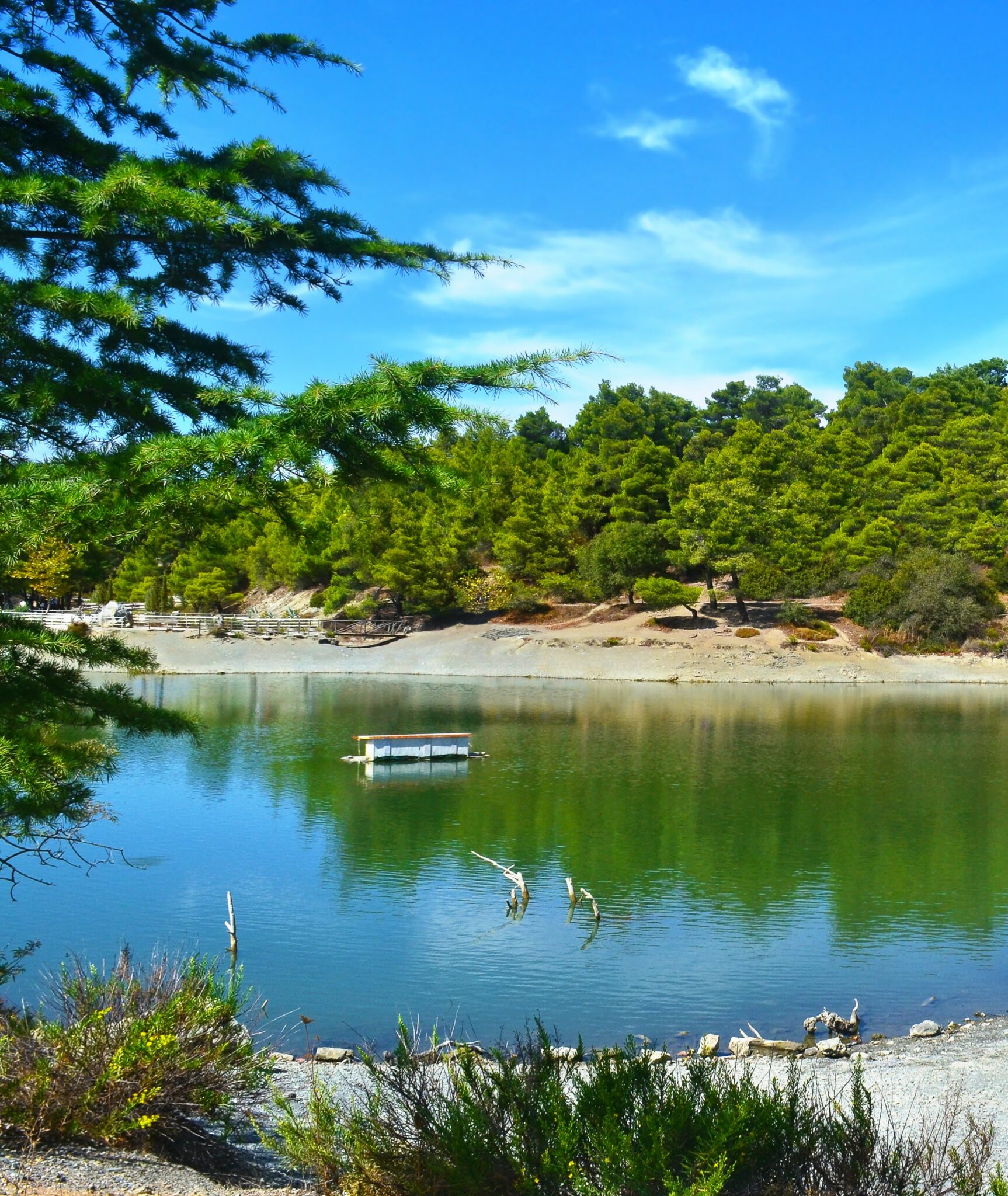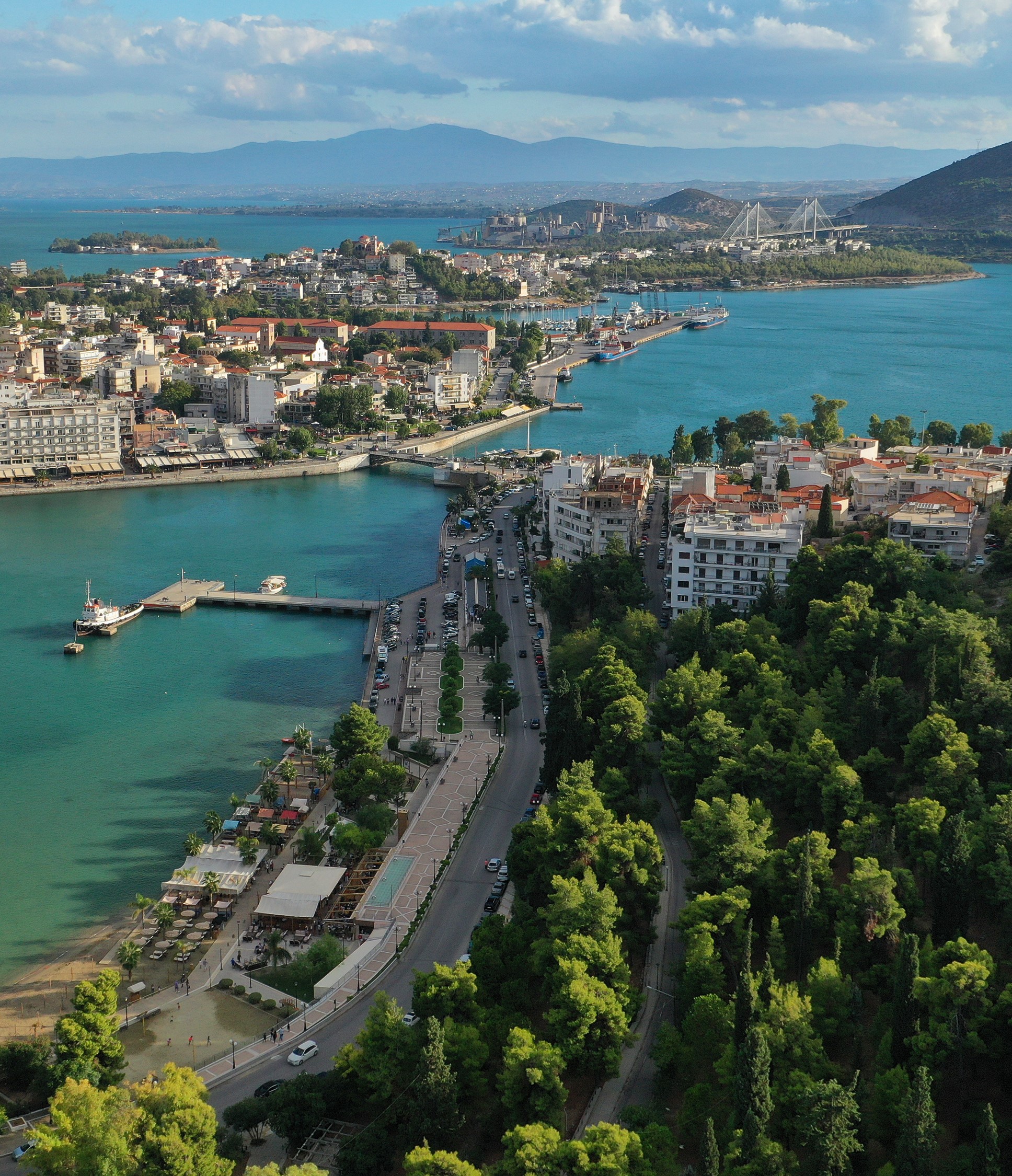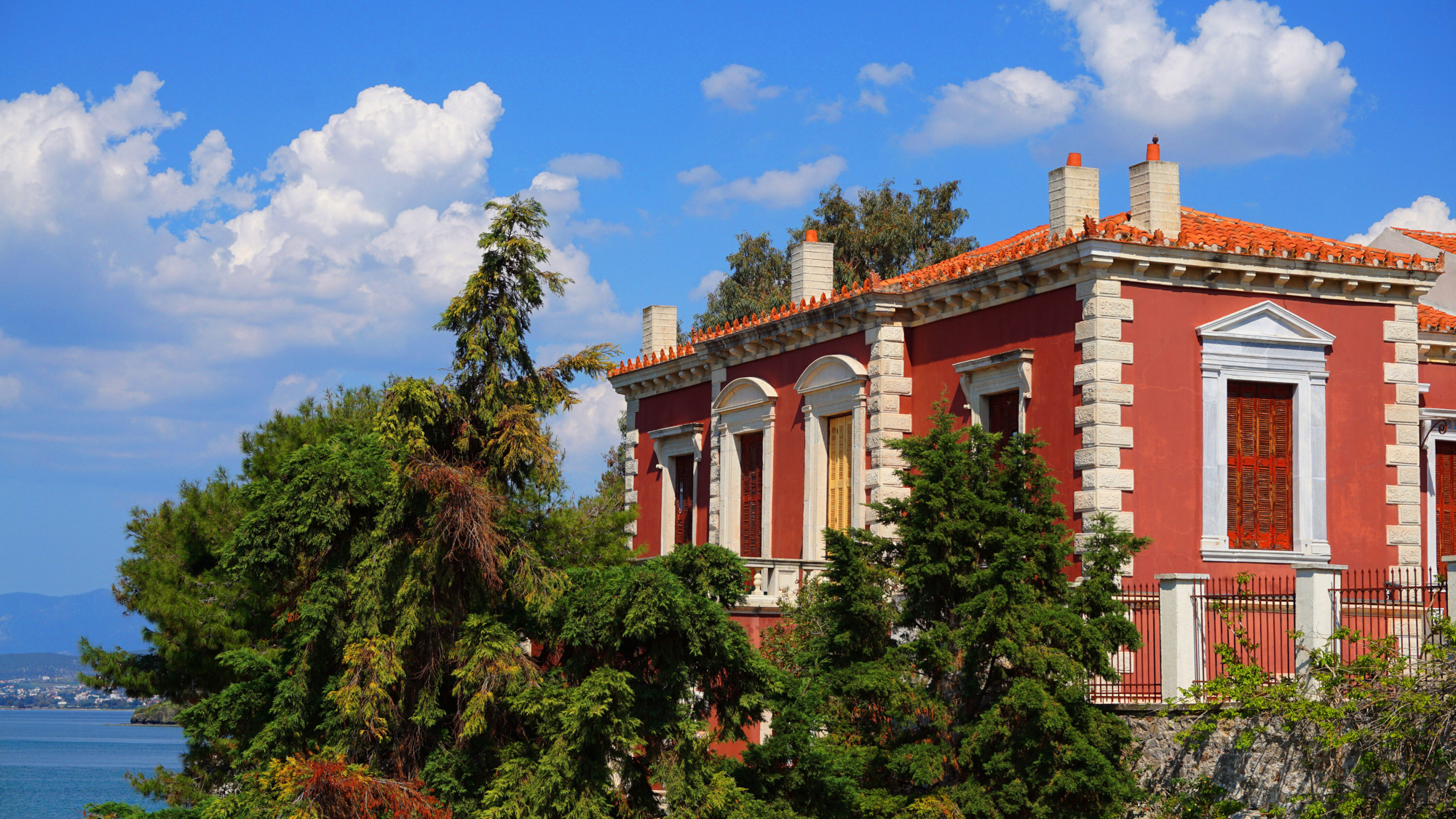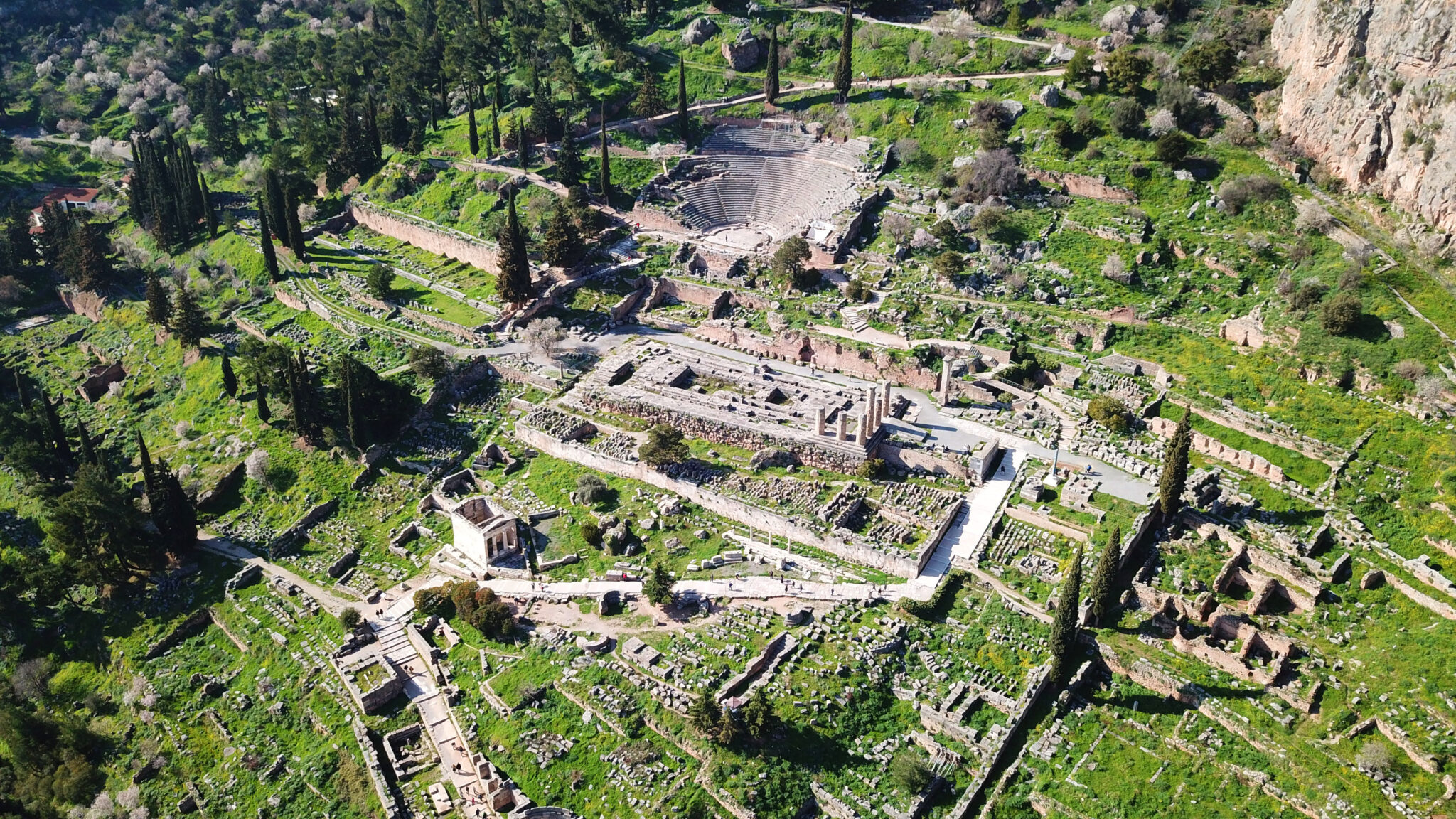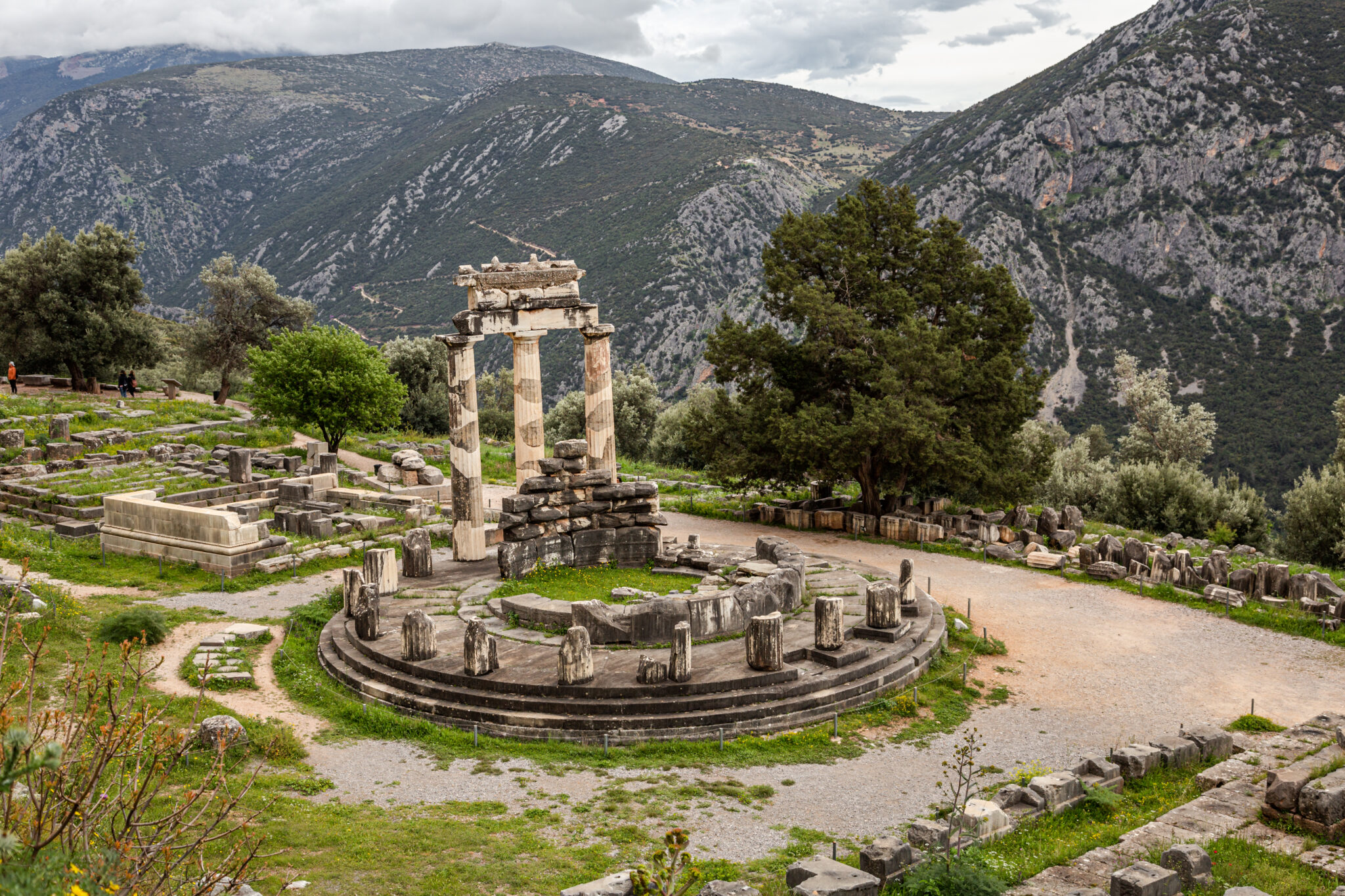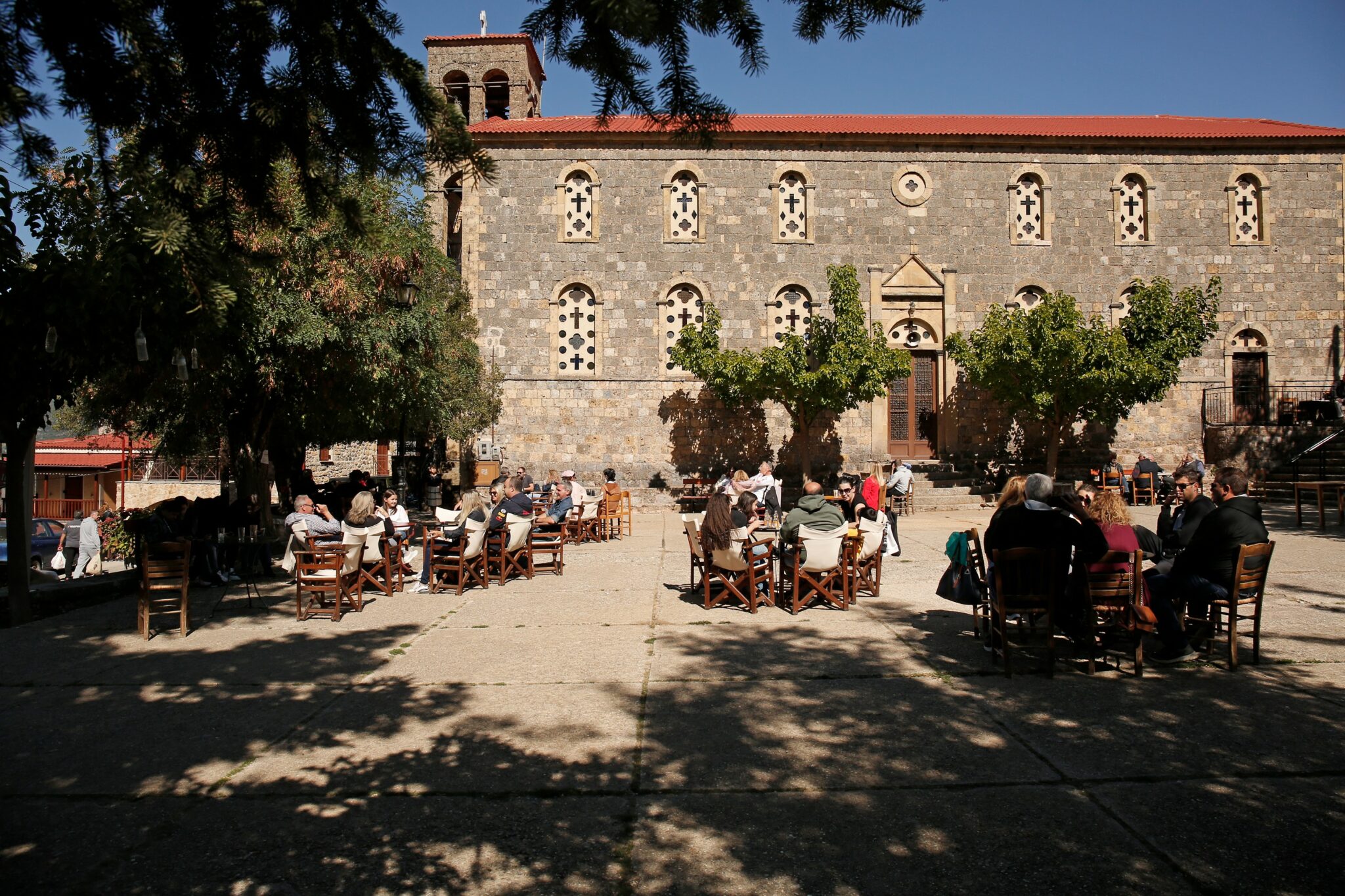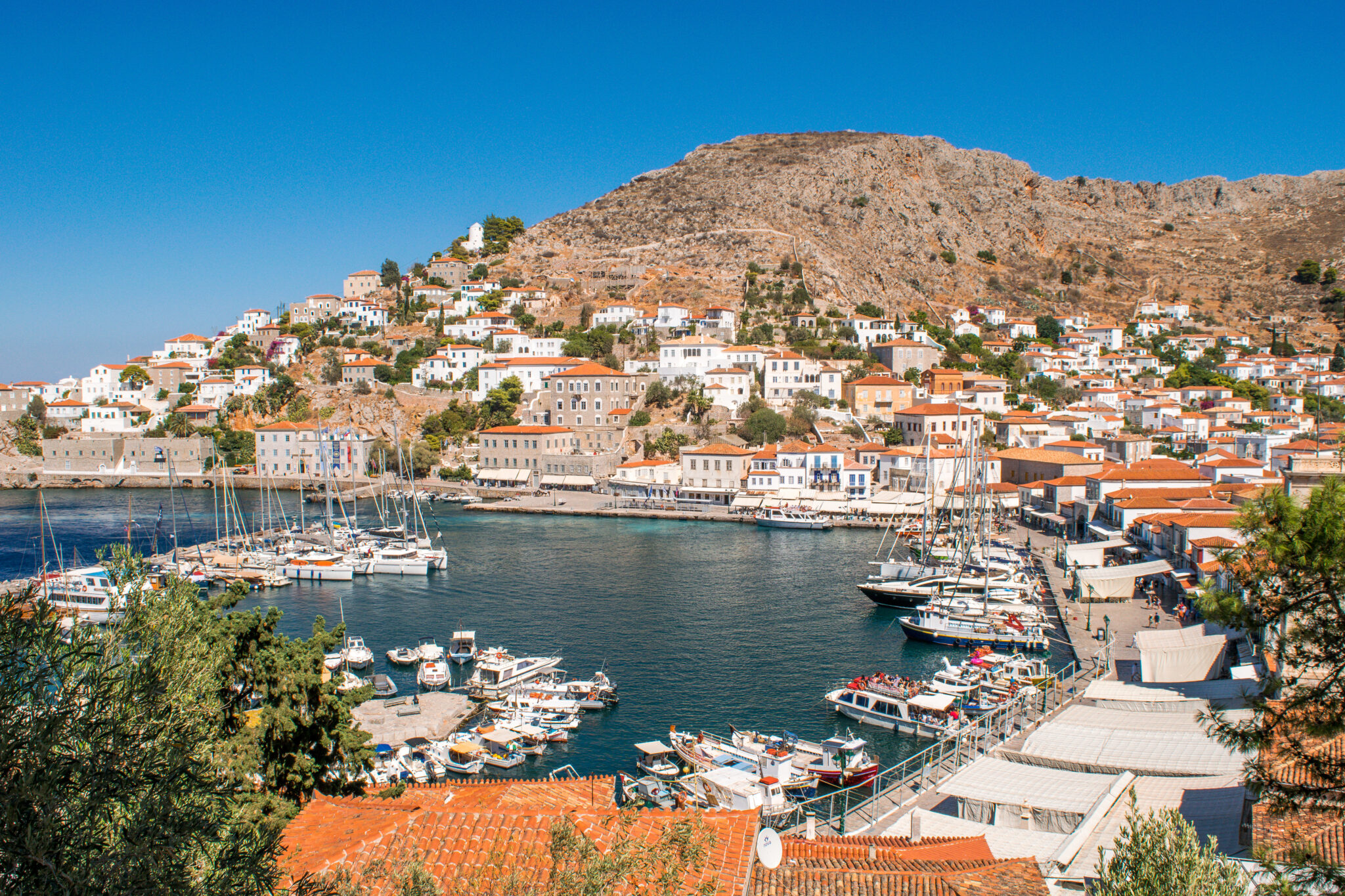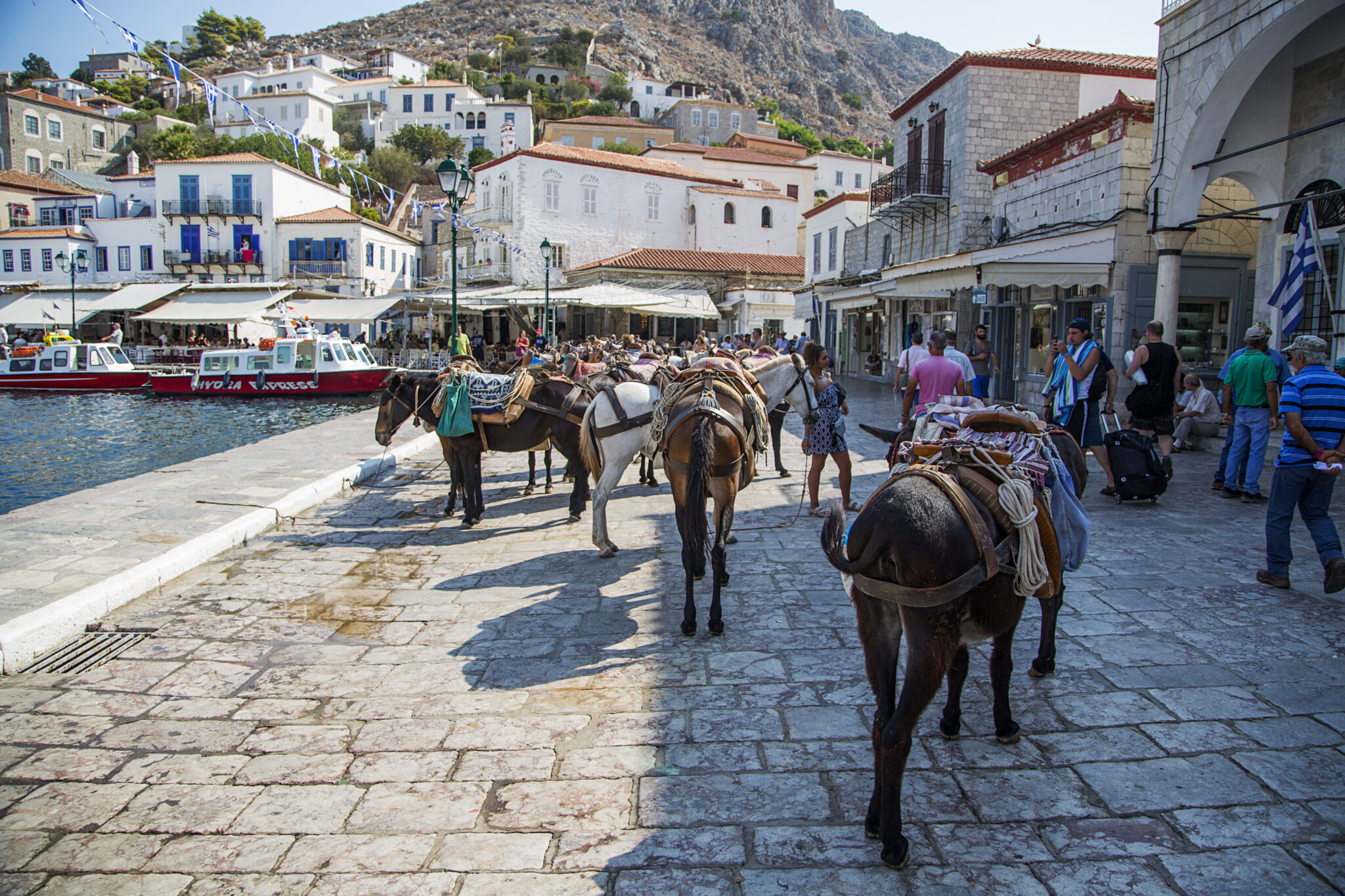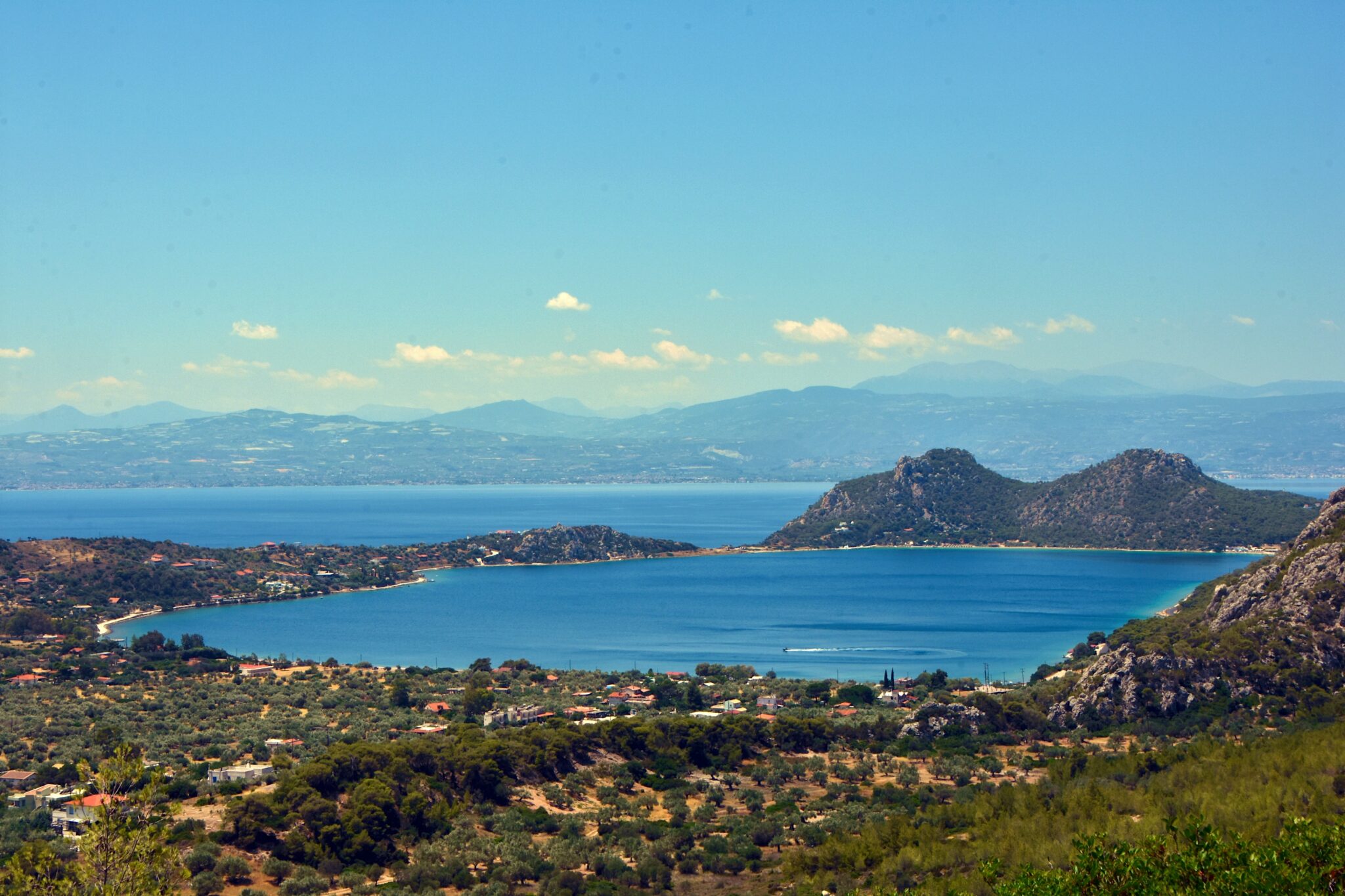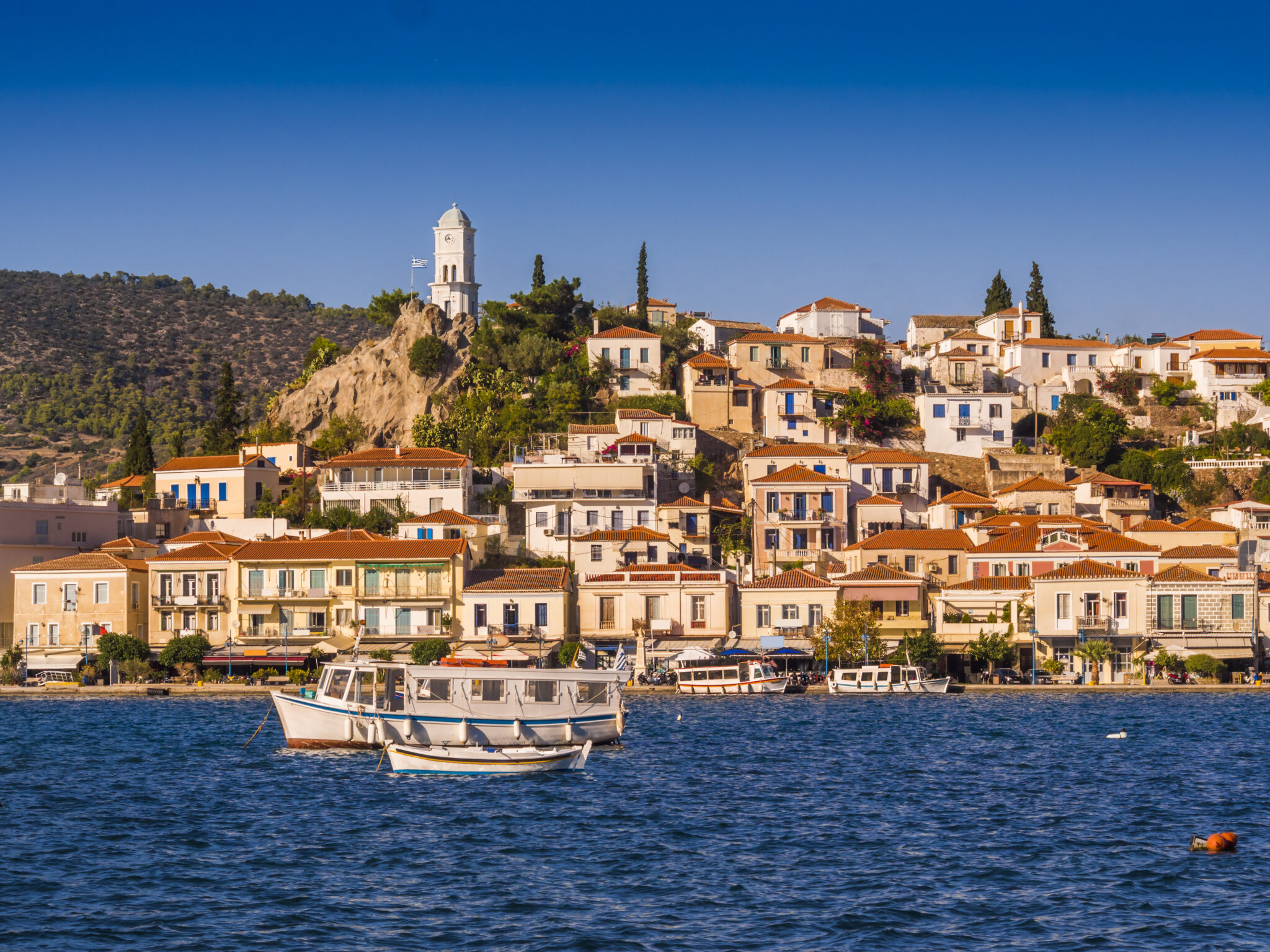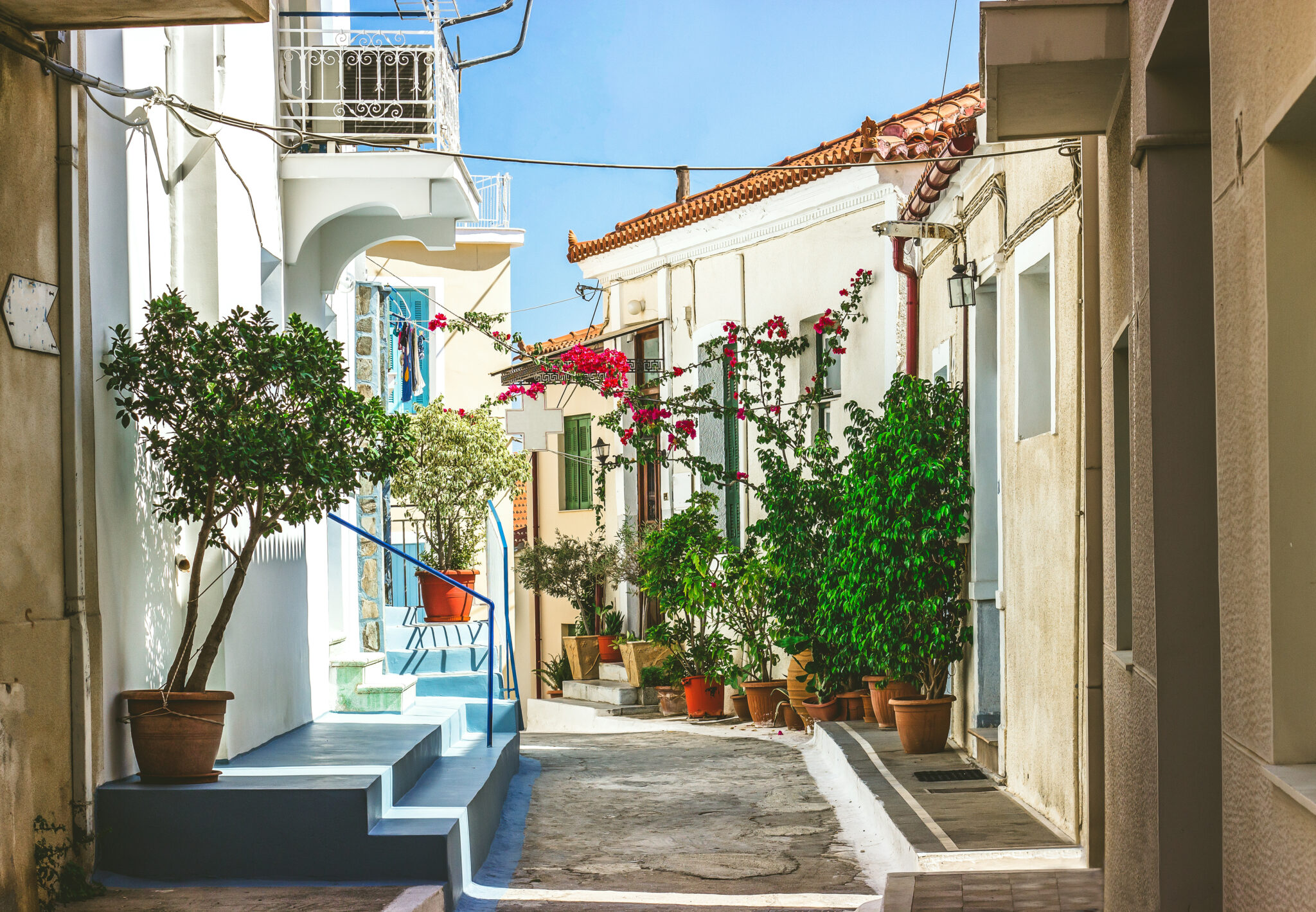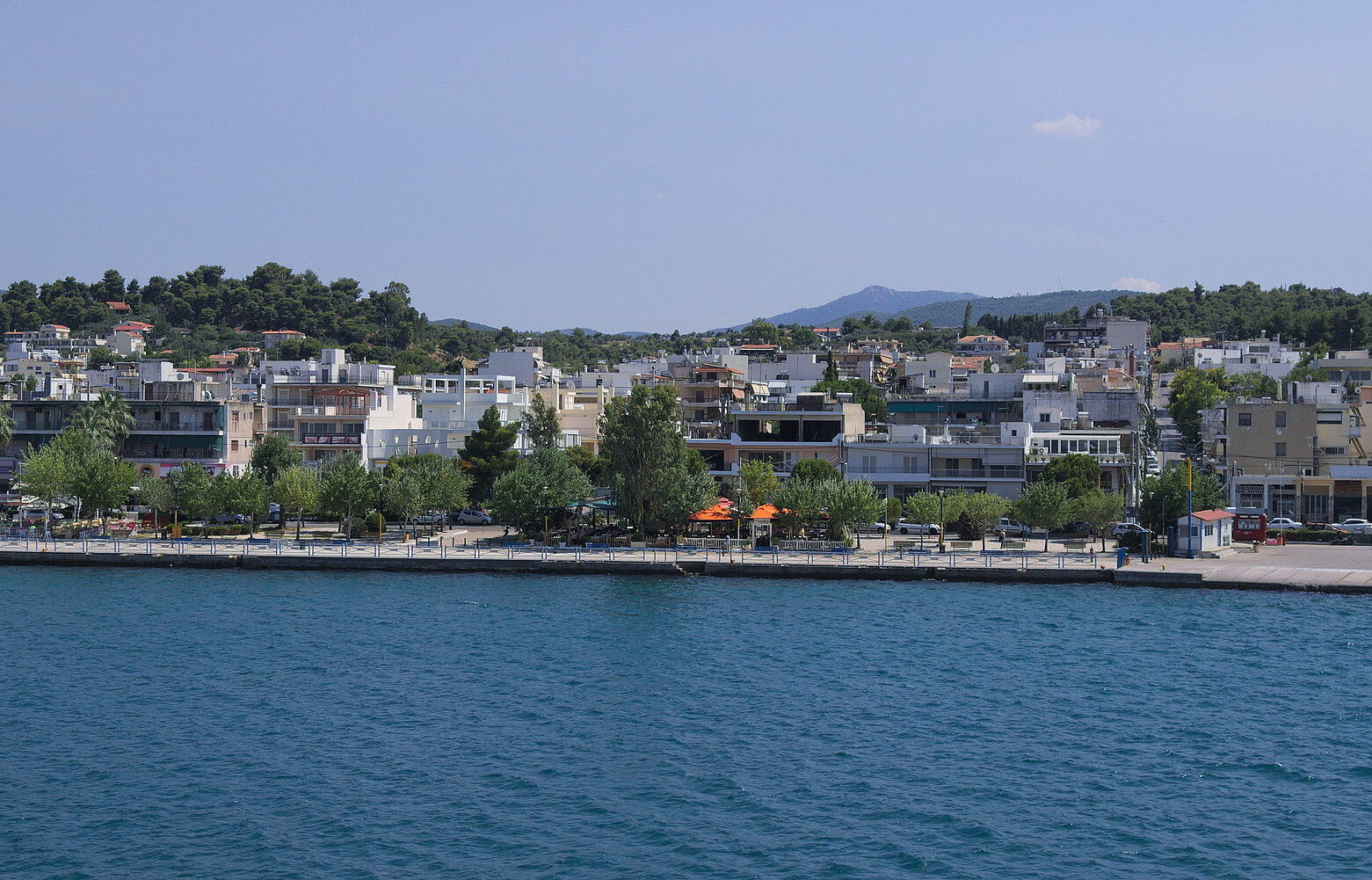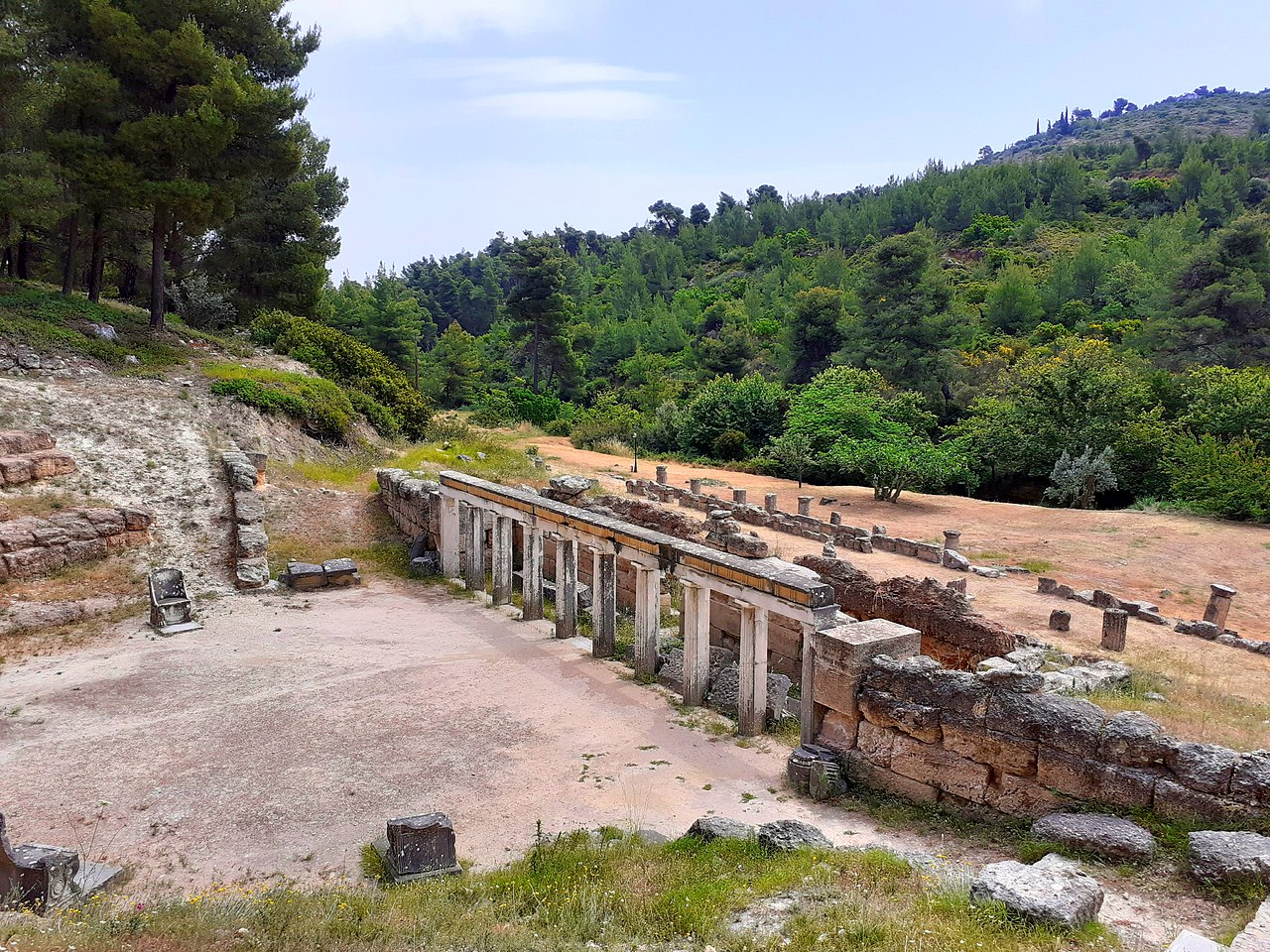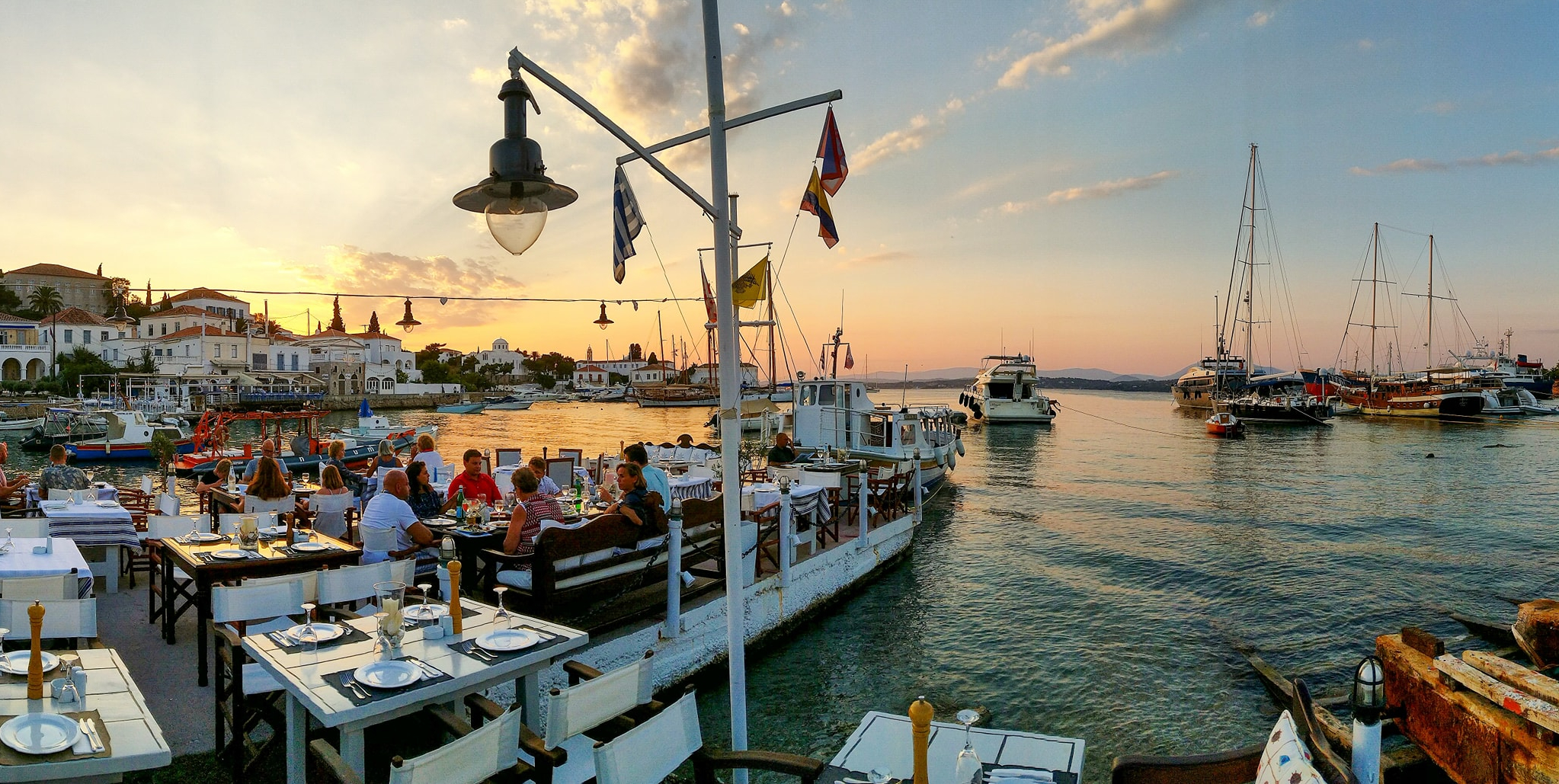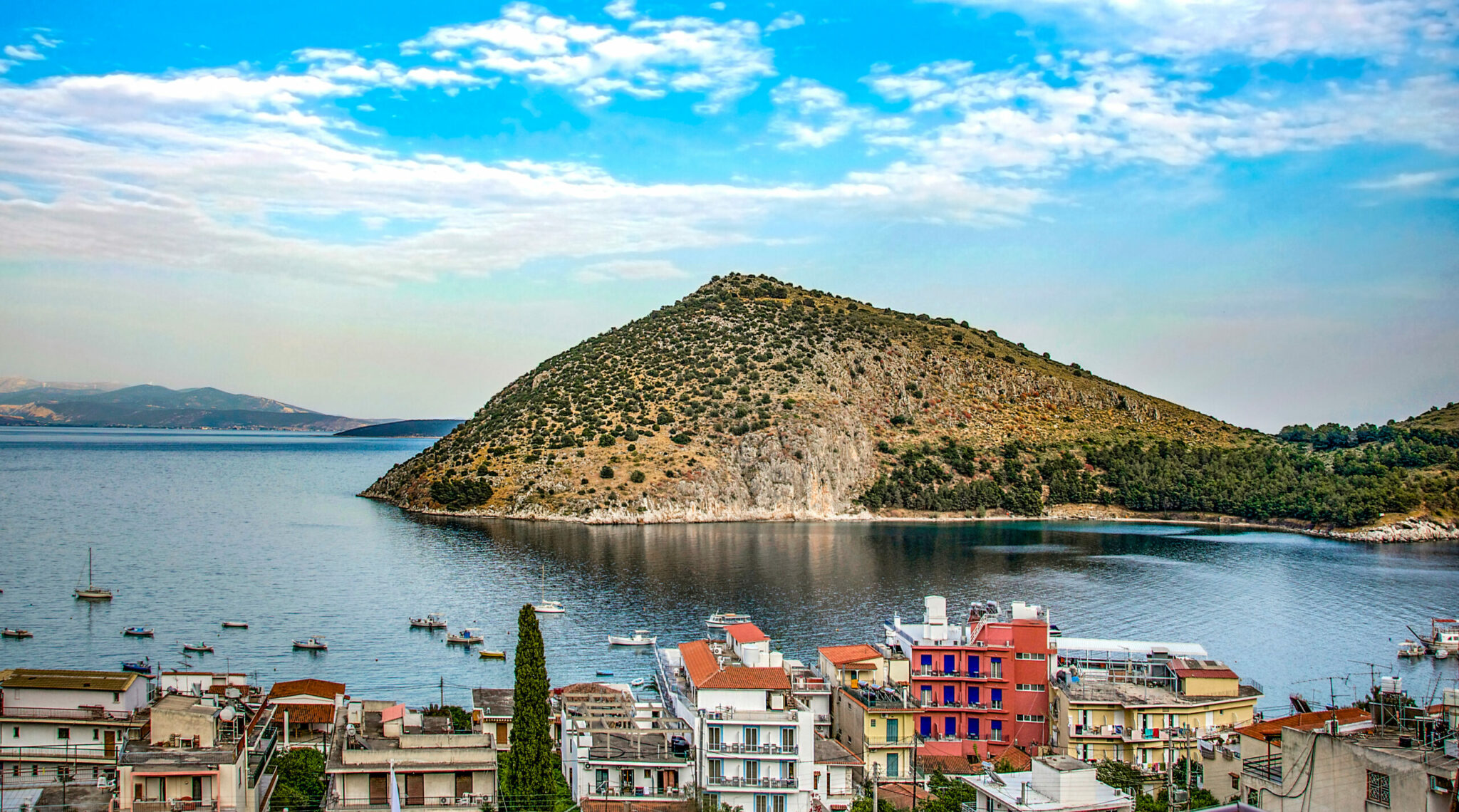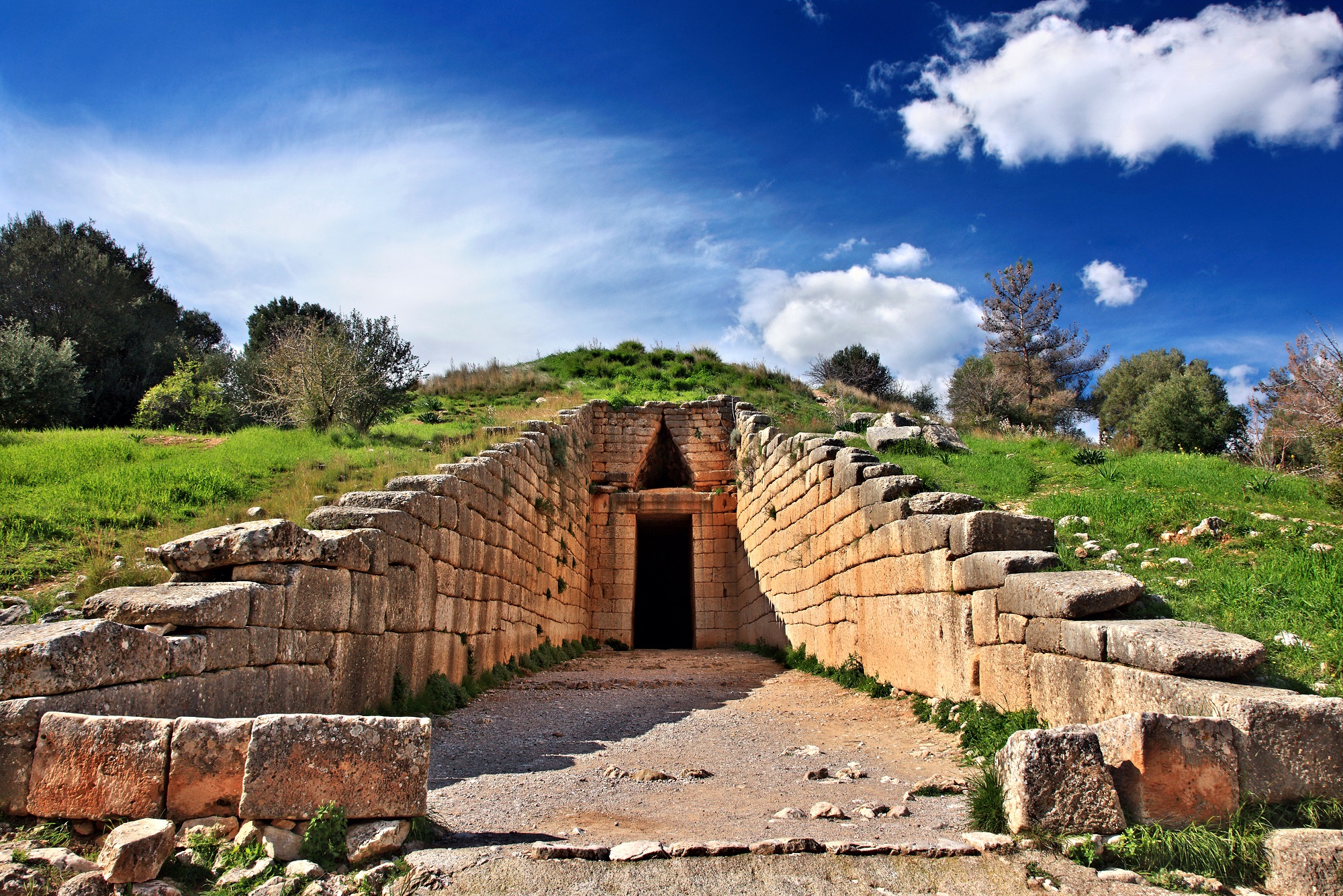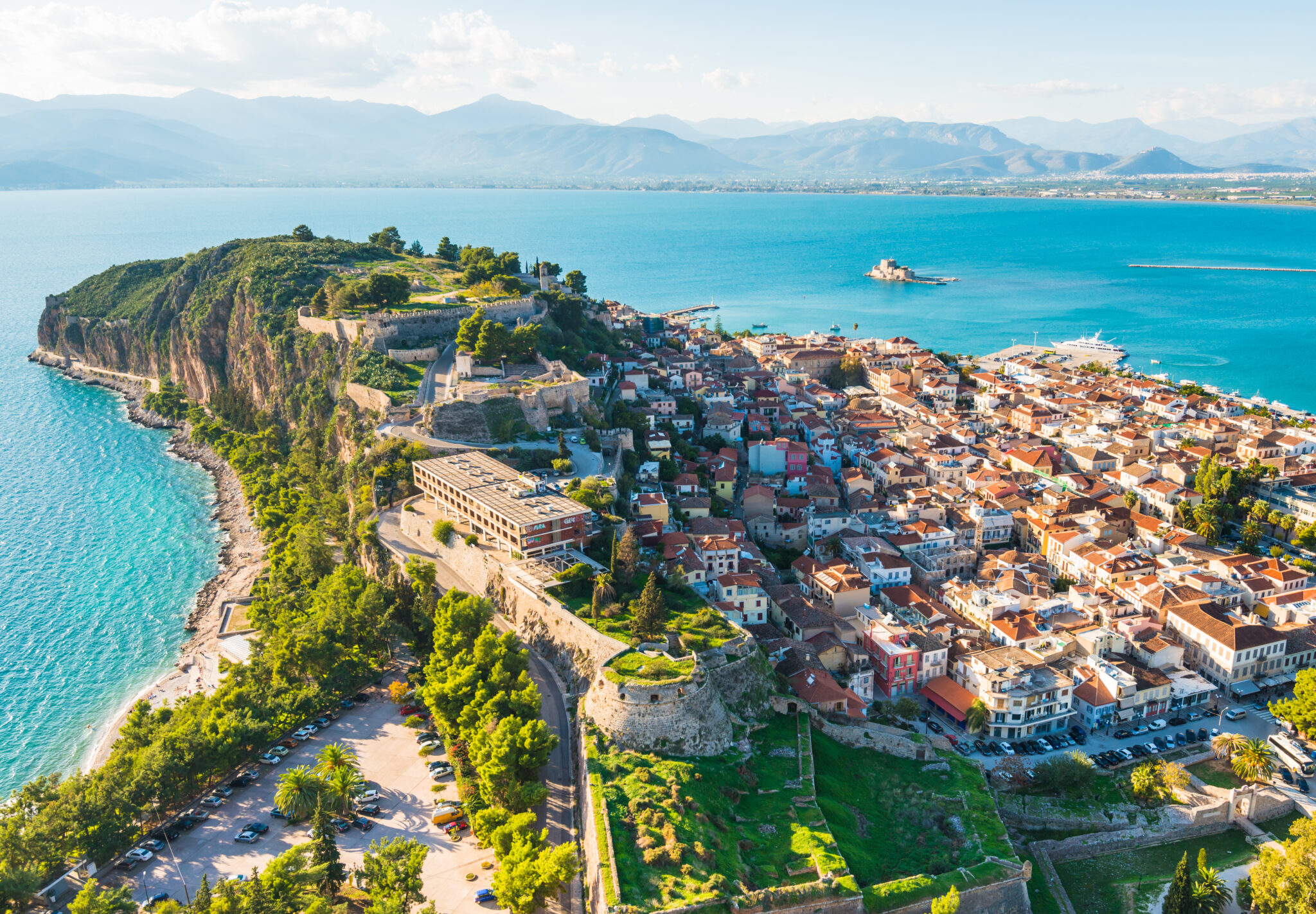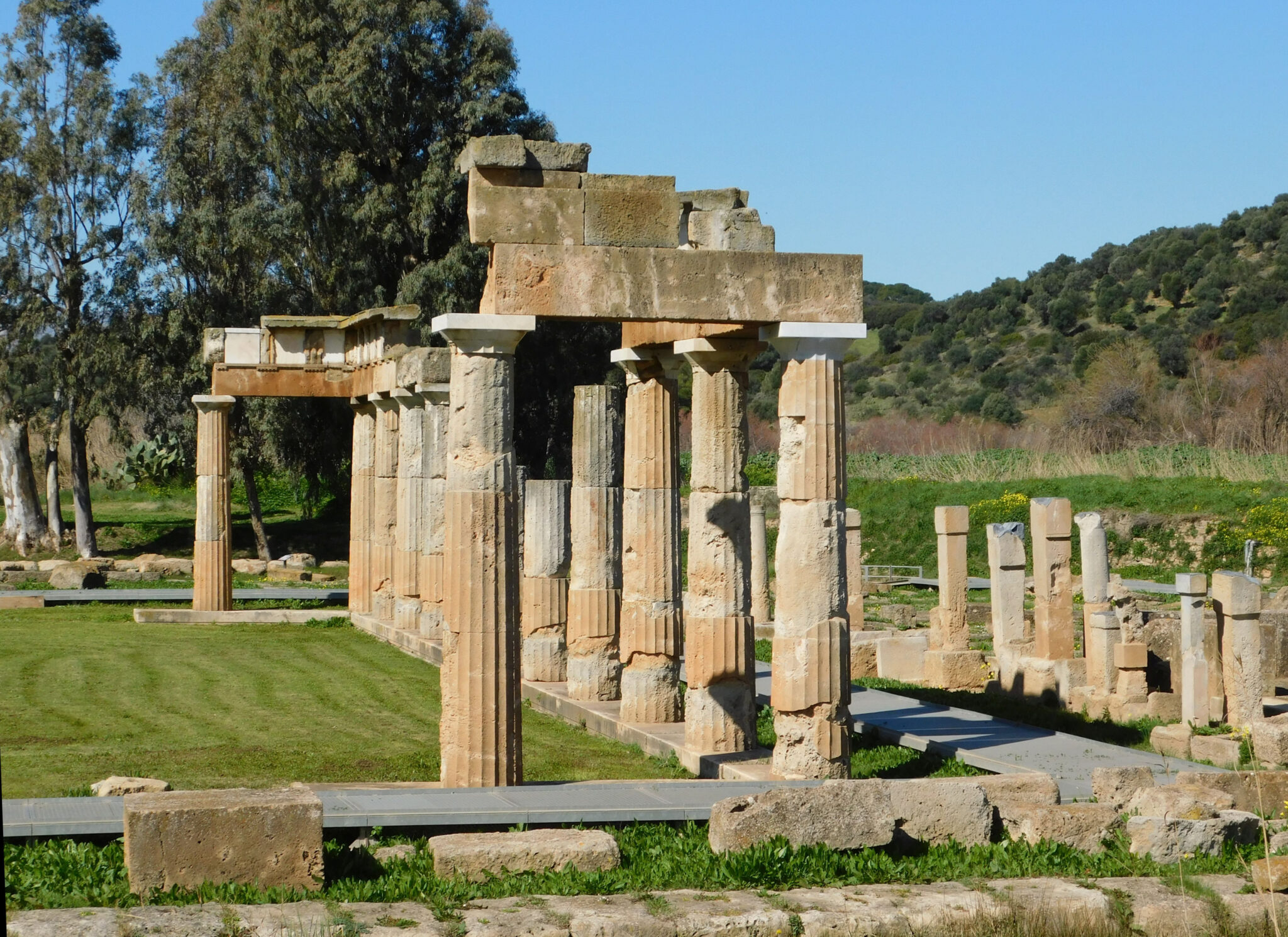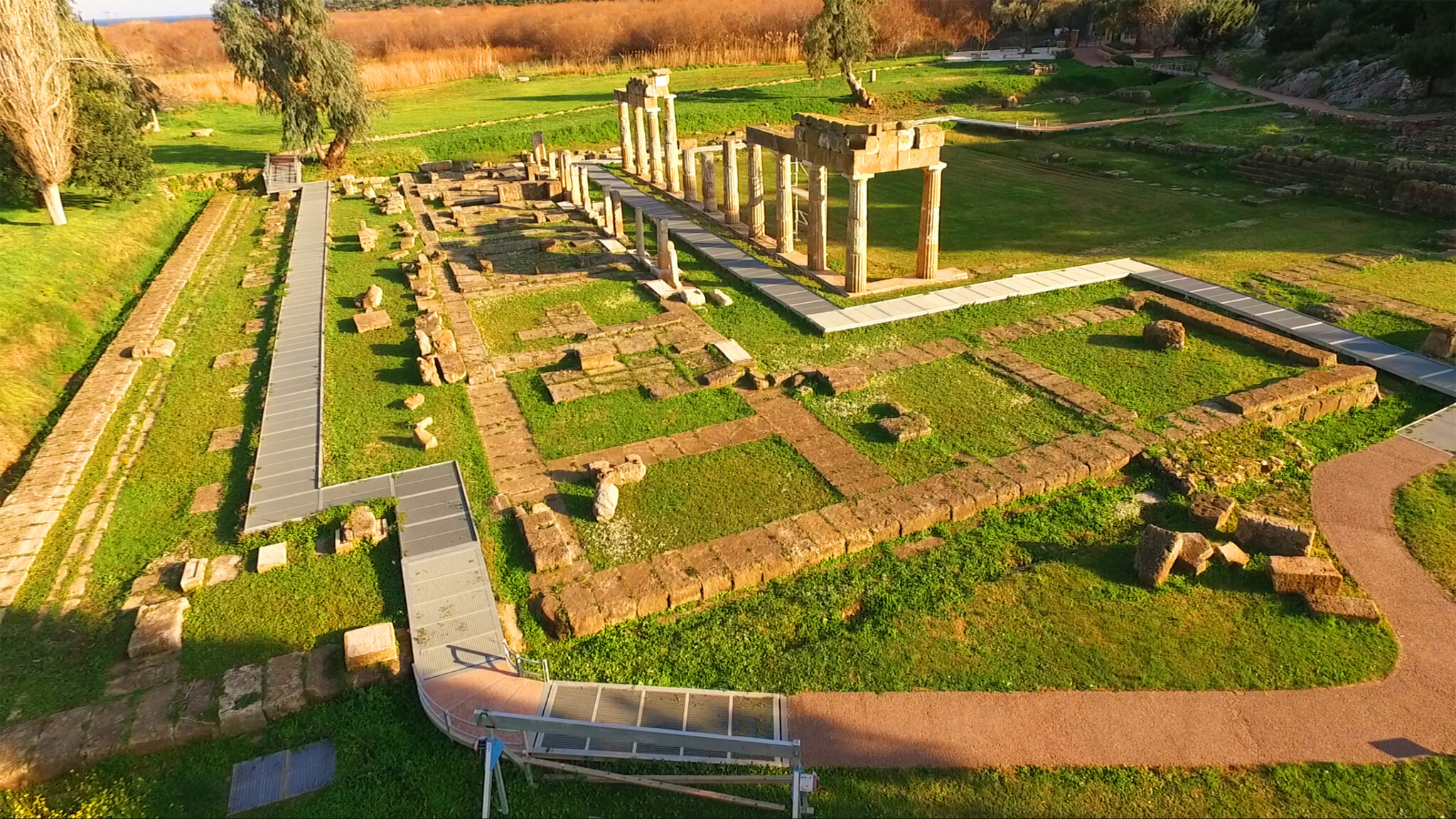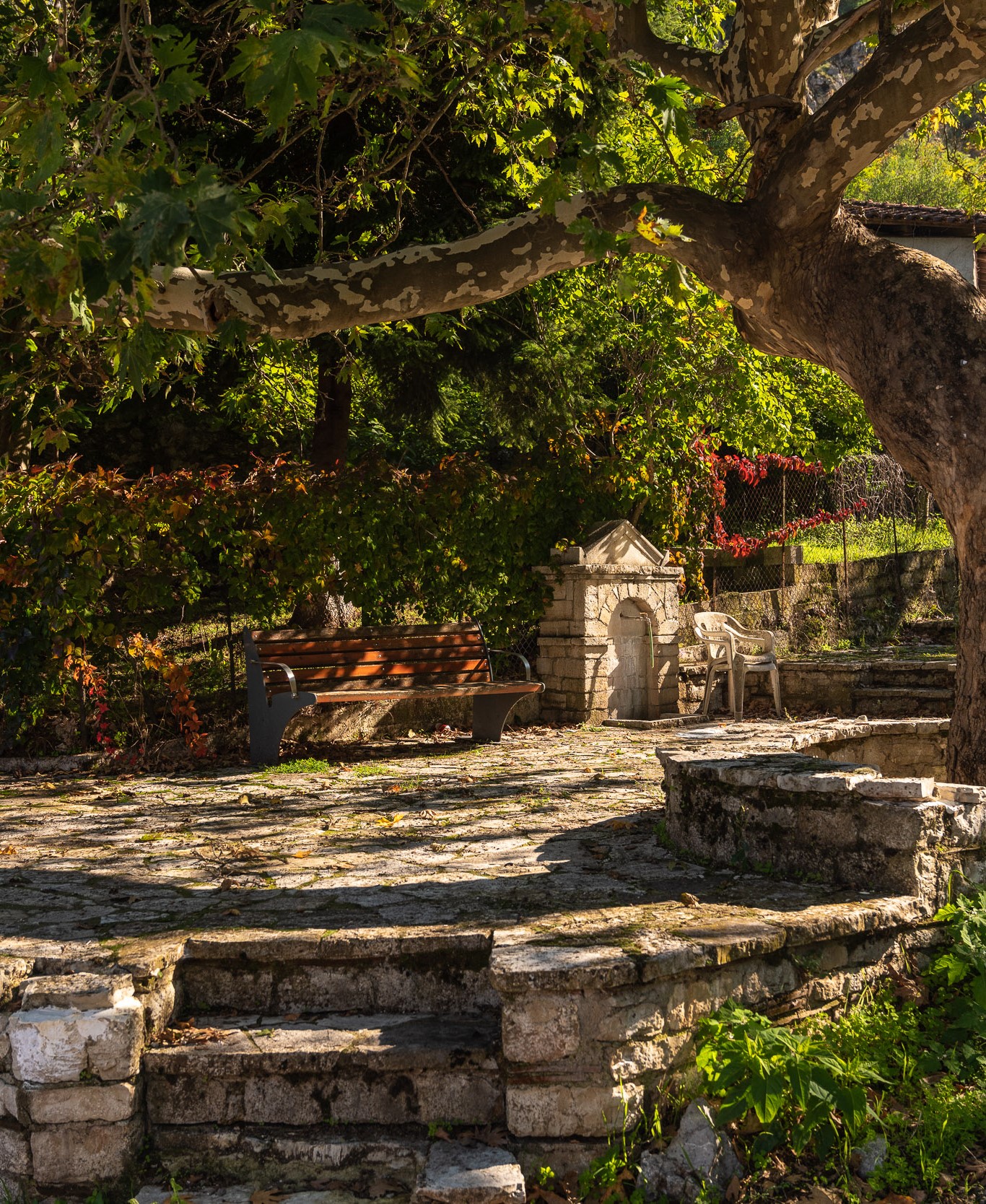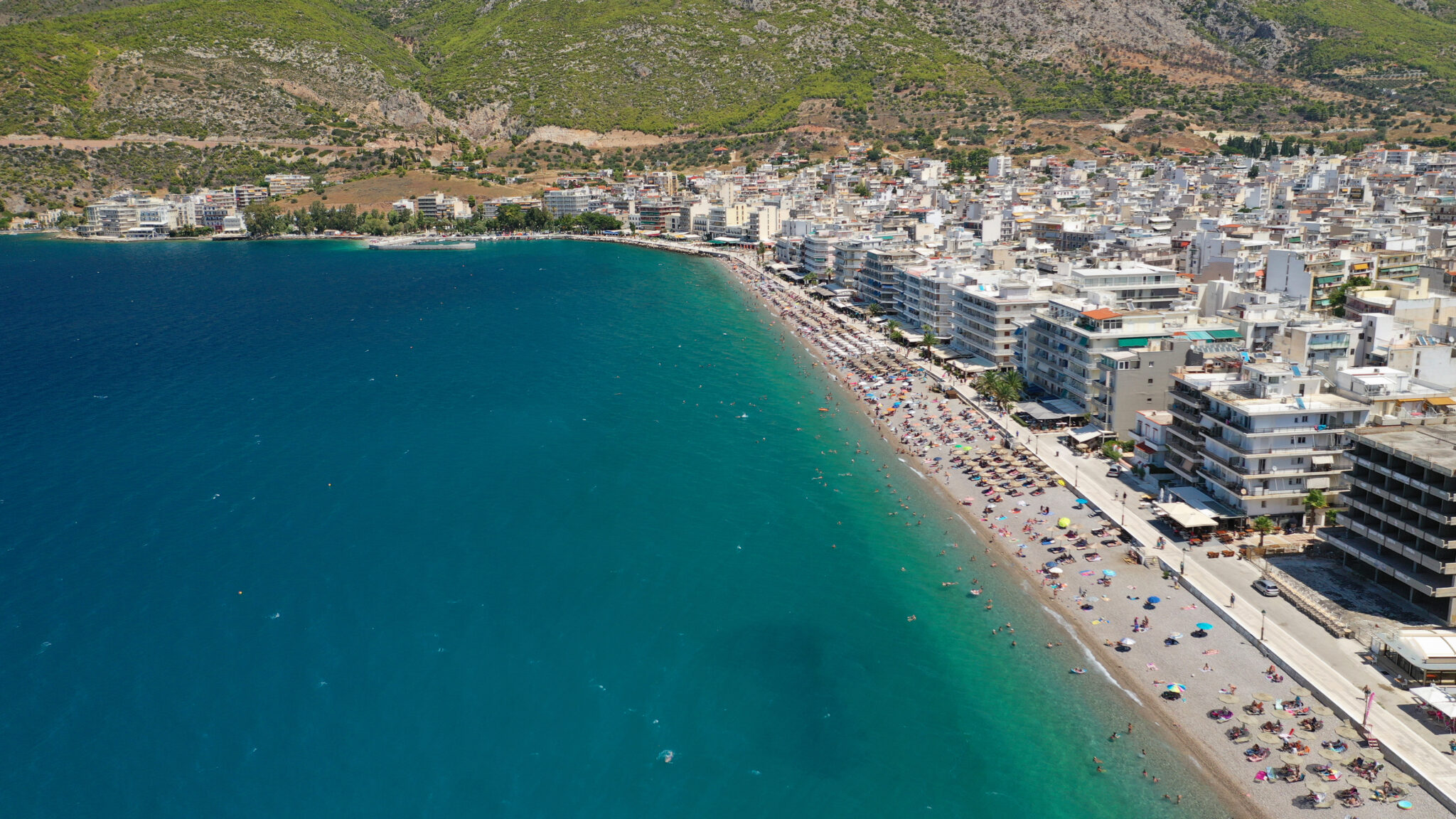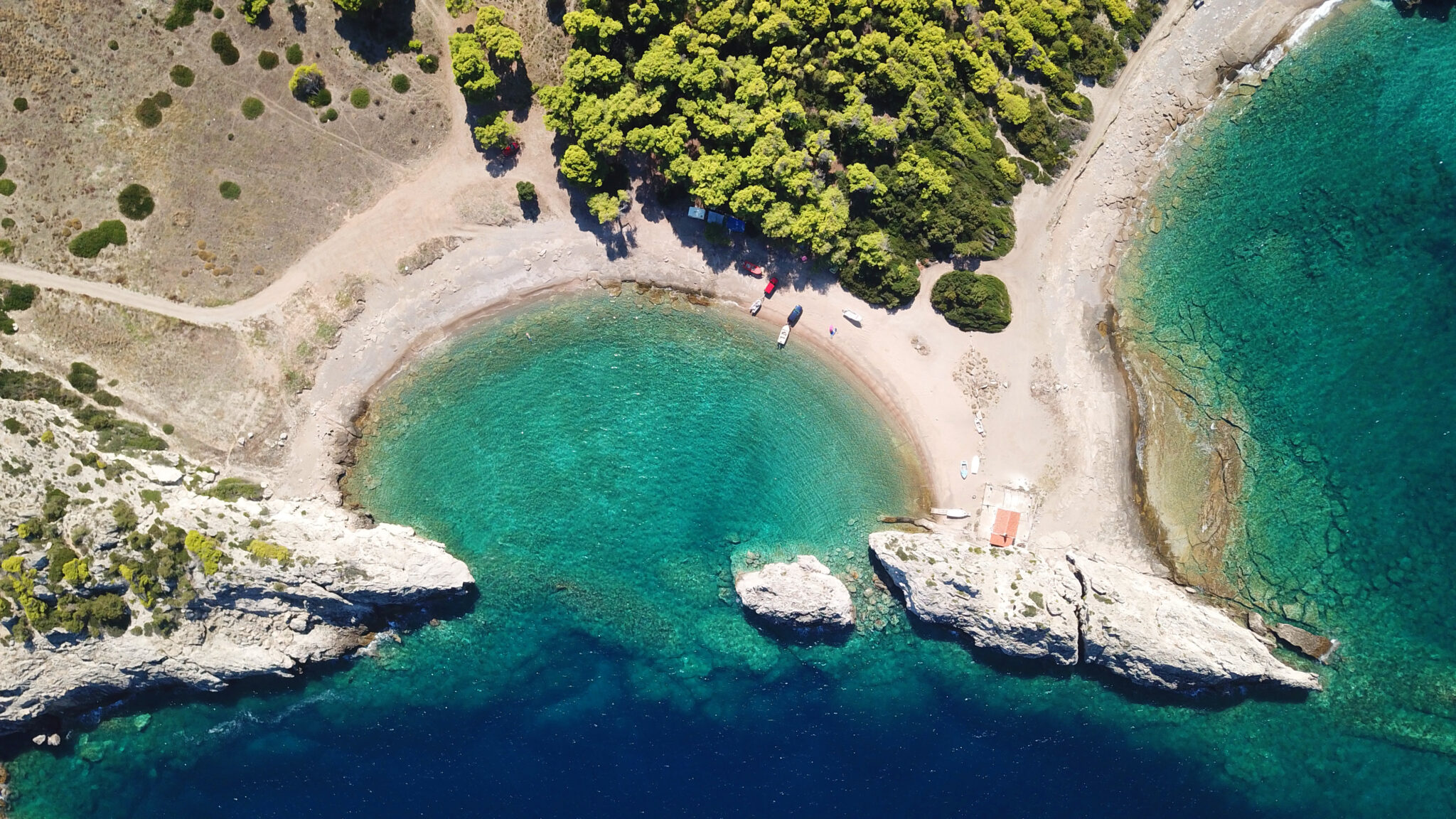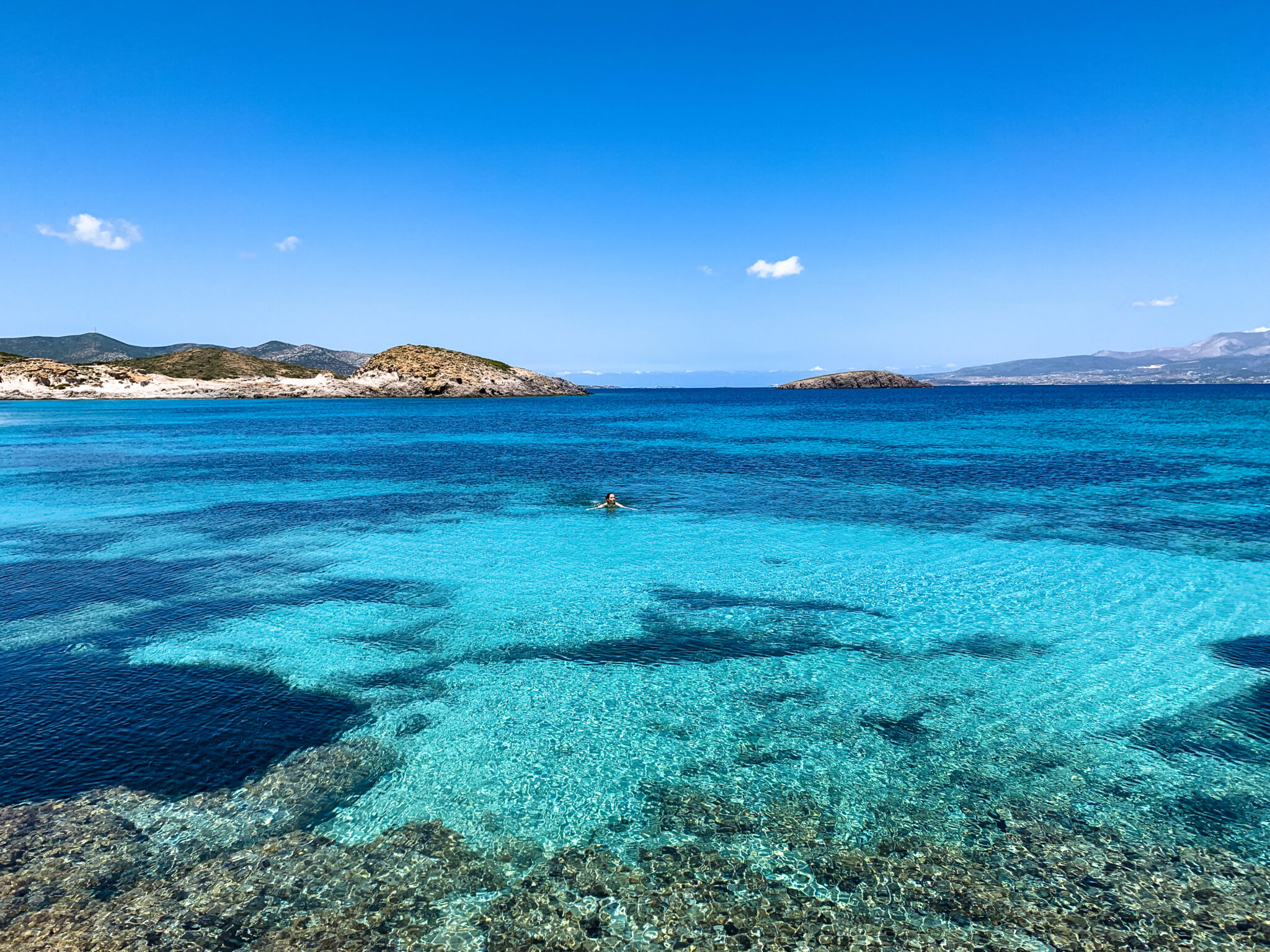One of the greatest pleasures of being in Athens is that you can make the most of all the wonderful things the capital has to offer but also enjoy it as a base for day trips that land you in entirely different worlds. Within one to three hours, you can hop onto a bus, boat or car and reach magnificent destinations, each with its fascinating history, culture and nature.
Here we present the best places to visit near Athens for an enriching day of exploration, heart-opening views and memorable activities. All of the places listed here are wonderful for longer visits too, with accommodations and restaurants that will keep you busy and satisfied for at least a few days.
Aegina
Just a short hop from Piraeus, in an hour you’ll find yourself on a pretty Argosaronic island brimming with natural beauty, a lively community, great food and an interesting history. This spot changes with the seasons, each visit offering a new experience. It’s famous for its delicious pistachios, thanks to the fertile land and sunny weather, and you’ll find plenty of tasty treats made from the nut – from pickles and jams to ice cream.
A trip here invites you to explore remarkable sites like the ancient Temple of Aphaia, the mystical old town of Paleochora, the impressive St Nektarios Monastery, the Archaeological Museum, the Christos Kapralos Museum and the Tower of Markellos. When it’s time to eat, the island’s tavernas serve up fresh seafood and authentic local dishes all year round, promising a delightful culinary adventure (read more here).
Agoriani
Agoriani, near Mt Parnassus, offers a peaceful retreat surrounded by fir trees, away from Arachova’s busy streets and is also more budget-friendly. It lacks the hustle and bustle of nearby Arachova, with the bonus of being more wallet-friendly. If you have a fondness for hiking, the tranquility of nature, and delicious food, this is your spot. Embark on an adventure through the fir forest, with a child-friendly hike starting from Agoriani and leading to the chapel of the Holy Trinity.
The village atmosphere, with its woodsmoke scent and the waterfall in the village square, invites you to enjoy local dishes at quaint taverns or sip hot chocolate at a café. Don’t miss the Mavrodimos guesthouse for nettle croquettes and wild boar stew, or Stamatis’ tavern for superb wild greens pie and a cheese pie beloved by kids.
Amfiklia
Located just under two hours from Athens, Amfiklia is part of a trio of northern Parnassos villages, alongside Polydroso and Agoriani, which have gained popularity for their proximity to the Parnassos ski resort. Amfiklia sits at Mount Parnassus’ base, offering spectacular views over the Kifissos River valley.
A must-visit here is the Artos Museum in the central square, where visitors can explore the bread-making process from sowing to serving, complete with displays of traditional tools, ovens, and other related items. The area is ripe with activities, comfortable stays, and diverse dining options, making it a well-rounded destination.
Beletsi Lake
In the embrace of the Attica basin lies Lake Beletsi, a small paradise located on the eastern slopes of Mt Parnitha, in the region of Agia Triada within the municipality of Aphidnae, this enchanting spot is less than an hour’s drive from the heart of Athens, a place where you can revive your senses in the refreshing embrace of dense pine forests.
Take long, tranquil walks around the lake, meandering around paths that are also wonderful for cycling along, and to refuel, settle down for a picnic in the specially designated areas. Don’t worry if you come unprepared for a spot of lunch, as you’ll find several good dining options in the nearby village of Sfendali.
Chalkida
Halkida, the vibrant capital of Evia, is steeped in history and offers unique attractions like the Red House (Kokkino Spiti), an 1884 mansion showcasing the architectural splendour of bygone eras, the Old Bridge – one of the world’s last sliding bridges that open nightly to allow boat passage, in the Euripus strait’s narrowest point – the Archaeological Museum, housed in a charming neoclassical building and displaying fascinating finds from across Evia, and the Karababas Fortress, a commanding Venetian fort from where you can enjoy panoramic views and a glimpse into Halkida’s strategic military importance.
Also worth seeing are the tidal rips of the Evripus Channel: Known for their unique and unpredictable movements, a natural spectacle that has fascinated visitors and scientists alike. For food, sit by the waterfront at one of many tavernas and enjoy an easygoing, scenic meal. Read more about Chalkida.
Delphi
Once considered the centre of the earth, Delphi is one of Greece’s most magnificent archaeological sites and only a couple of hours’ drive from Athens. Famous for its mystical oracle of Pythia, who delivered prophecies that set the course of history, Delphi’s historical significance is profound. The Temple of Apollo and the Temple of Athina Pronia, the stadium and the Castalian Spring, are sights to behold, as is the olive grove of Amfissa that sprawls below.
The on-site Delphi Museum showcases significant ancient art, including the Charioteer of Delphi and the Sphynx of Naxos. In the charming village of Delphi 10 minutes’ drive away, sip coffee looking out to panoramic views and visit the Museum of Delphic Festivals in Angelos Sikelianos’ old stone house. Just 15 minutes away is the village of Arachova, a popular cosmopolitan base for skiers with a picturesque setting, quaint architecture and a quality selection of cafe-bars, restaurants and stores.
Goura
From a quiet, mountainous retreat, Goura has transformed into a sought-after destination. Situated a mere two hours from Athens, this village is now a favourite among day-trippers who often snag the best spots in local tavernas. Not far from Goura, just 9 kilometres away, lies the stunning artificial Lake Doxa, encircled by vast fir forests. On fine-weather days, visitors can trek from the lake’s western edge up to Dourdouvana Mountain to relish breathtaking scenery.
Hydra
A two-hour ferry ride from Piraeus, Hydra stands out in the Argosaronic Gulf for its rich history, lively cultural scene, and distinctive lifestyle. In this car-free island is you can admire 18th and 19th-century mansions that hint at its maritime glory. Key attractions include the Hydra Museum-Historical Archives, offering insights into Greece’s historical saga, and the Museum of Post-Byzantine Art and History, located in Pavlos Kountouriotis’ former residence, which highlights Hydra’s role in contemporary Greek history.
Hydra, where iconic musicians like Leonard Cohen created music and art, especially in the 60s and 70s, is also famous for its modern-day dynamic arts scene, exemplified by the DESTE Foundation’s annual exhibitions that attract art aficionados worldwide. The island’s quaint boutiques, exquisite dining venues serving Mediterranean delicacies, and the absence of vehicles create a serene yet vibrant atmosphere. Read more about Hydra.
Loutraki
Situated 80 kilometres from Athens, Loutraki is famed for its therapeutic hot springs and spas as well as its casino and is popular among Greeks as well as foreign visitors for its proximity to the capital. Visit the ancient Heraion sanctuary, a seafront spot with intriguing ruins, dedicated to the goddess Hera, which is imbued in the area’s mythological heritage and stands right in front of the water.
The Gerania Mountains, with their scenic hiking trails, are ideal for nature enthusiasts, while Vouliagmeni Lake and the Alkyonides islets are wonderful sights for water lovers to enjoy. Loutraki’s dining scene, with a variety of restaurants serving fresh seafood and traditional Greek cuisine, compliments the town’s diverse attractions.
Poros
Poros, a Saronic island just over an hour from Piraeus port, may not be as glamorous as its neighbours Hydra and Spetses, but has a unique, more introverted allure of its own. This island comprises Sphaeria, where the amphitheatrical main town with and neoclassical charm is, and Kalavria, separated by a bridge. Central to its landscape is the 1927 Clock Tower perched high above the harbour.
Top places to visit in Poros include the Archaeological Museum in Koryzi Square, home to artefacts spanning Mycenaean to Roman times, and Agios Georgios church, adorned with Konstantinos Parthenis’ murals. Nearby, the old Russian Naval Base and the Temple of Poseidon ruins tell tales of strategic and spiritual significance, while the Zoodohou Pigys monastery, with its 17th-century altarpiece, adds to the island’s serene beauty. Enjoy a sunset cocktail on the harbourfront and dine at a great choice of local tavernas serving home-cooked traditional meals and fresh fish. Read more about Poros.
Skala Oropou
The Amphiareion, located southwest of Skala Oropou, is a significant archaeological site once dedicated to Amphiaraus, showcasing ancient Greece’s reverence for the Chthonic god. The sanctuary, once known for its therapeutic baths, theatre and healing facilities, highlights the area’s historical depth. Nearby, a vibrant wetland and lagoon attract bird watchers with species like mallards, cranes, and flamingos, especially noticeable before their winter migration.
Additionally, the Technology Museum PHAETHON enriches the cultural landscape, showcasing diverse exhibits from vintage cars to telecommunications and defence systems. Skala Oropou’s harbour area also invites visitors for a stroll, complemented by local dining options, merging historical exploration with leisure. Read more about Oropos.
Spetses
The Argosaronic island of Spetses, just two hours from Piraeus port, dazzles visitors with its historical intrigue, and modern allure. The main town, Dapia, is the island’s vibrant hub, where neoclassical mansions and the iconic Poseidonion Grand Hotel tell tales of a grandiose past. The island’s key role in the Greek War of Independence is commemorated through landmarks like the giant statue and converted home of Laskarina Bouboulina and the Spetses Museum, housed in Hatzigiannis Mexis’ mansion.
Dapia’s main harbour buzzes with cafes and tavernas as well as shops selling everything from designer clothes, accessories and jewellery to traditional crafts, while its Old Harbour oozes with charm and can be reached on a 15-minute horse and carriage ride or via a lovely seaside walk on foot. Meanwhile, the island’s quieter villages and natural landscapes offer opportunities for hikes and peaceful swims. Read more about Spetses.
Tolo and its Environs
Tolo, a picturesque village in the Peloponnese, offers a wealth of attractions that combine historical depth with stunning natural beauty. The village has several beautiful sandy beaches such as Kastraki, Plaka (Drepano Beach) and Vivari, each offering a unique setting from secluded bays to family-friendly shores with tavernas and beach bars. The local dining scene caters to all tastes, from fresh seafood at beachside tavernas to traditional Greek dishes and international cuisine. Tolo is an excellent base for those interested in history, as the ancient city of Asini is nearby, with ruins from various periods, including the Bronze Age and the Middle Ages. Read more about Tolo.
The archaeological site of Mycenae, a centre of Greek civilisation in the second millennium BC, and the beautifully preserved ancient theatre of Epidaurus are both within easy reach. Tolo is also the gateway to charming islets such as Daskaleio, with its 17th-century church and secret school from the Ottoman occupation, and Koronisi, famous for its small church and tranquil atmosphere. For those seeking peace and spiritual reflection, the monastery of Agia Moni near Nafplio is a short drive away and is a masterpiece of Byzantine architecture. Read more about Mycenae.
For further exploration, nearby Nafplio, the first capital of independent Greece, has Venetian-influenced architecture, historic fortresses such as Palamidi, the Bourtzi, which is on an islet across the harbour, and a vibrant old town. In addition, the region around Tolo is dotted with significant archaeological sites such as ancient Tiryns, Argos and Nemea, each contributing to the rich tapestry of Greek history and culture. Read more about Nafplio.
Vravrona
Less than an hour’s drive from Athens, Vravrona stands out for its historical significance, especially highlighted by the 5th-century BC Temple of Artemis. This area not only offers a deep dive into the religious and architectural practices of ancient Greece but also features a museum nearby that houses a diverse collection of items, ranging from sculptural art to everyday objects, providing a comprehensive insight into the ancient community that thrived here.
The natural landscape of Vravrona, particularly its wetlands, hosting a diverse array of bird species, plays a crucial role in biodiversity. Vravrona’s vicinity to other historical points of interest, like the medieval Frankish Tower and the Cave Koutouki, known for its impressive geological features, makes it an even more rewarding place to visit.



